- THE PRINCESS PASSPORT
- Email Newsletter
- Yacht Walkthroughs
- Destinations
- Electronics
- Boating Safety
- Ultimate Boat Giveaway


Boat Stabilization: Fins vs. Gyros
- Updated: September 4, 2018

Most owners want to reduce the motion that makes people seasick on their boat, and many have heard about stabilization systems provided by fin stabilizers and gyros. But which is better? And specifically, how do advanced curved-fin systems like Side-Power Vector Fins match up with the most popular gyro systems? Let’s start with the basics and go from there.
Both Vector Fins and gyro systems work well at anchor, assuming you’ve sized the equipment properly. Underway, Vector Fins are usually superior to a gyro because
- the power of the fins increases exponentially with speed;
- the fins can maintain anti-roll force indefinitely while the gyro relies on precession (change in the angle of the gyro’s axis; once the gyro reaches the end of its stroke (or “throw”), the gyro loses its ability to stabilize;
- the fins will also correct list against a steady crosswind while the gyro will quickly run out of precession;
- Vector fins generate significant lift at speed which improves speed and fuel economy over straight fins,
- when a boat goes into a turn, a gyro or straight-fin system will try to keep it level, while the Vector fin system recognizes the difference between a roll and a turn, and banks the boat into the turn to resist the centrifugal force generated. It’s the same sort of effect a banked turn on a race track creates. As a result, with Vector Fins, one barely notices that the boat is turning, and glasses and plates stay put, rather than slide off the table.
Advantages of gyros are that they have no appendage, they are relatively small and compact, and they are well-engineered to minimize the intense heat generated on the bearings by the spinning mass. Gyros come in an attractive package and work well in many circumstances.
Disadvantages of the gyro systems are that they are less effective underway, are heavy, and in some cases, servicing requires removing the unit from the boat. For a 30-knot boat, a gyro must be much bigger–perhaps bigger than space allows–to equal Vector Fins’ performance, so sometimes multiple gyros will be installed. The systems can take up to an hour to “spin up” before they provide full stabilization, also generate noise, may require structural reinforcement, and with few exceptions are wholly dependent on AC power off a generator. In certain sea conditions, their effectiveness is also limited by stroke or precession distance, and when it’s time to replace the main bearings, most gyros must be removed from the boat and returned to the factory for service.
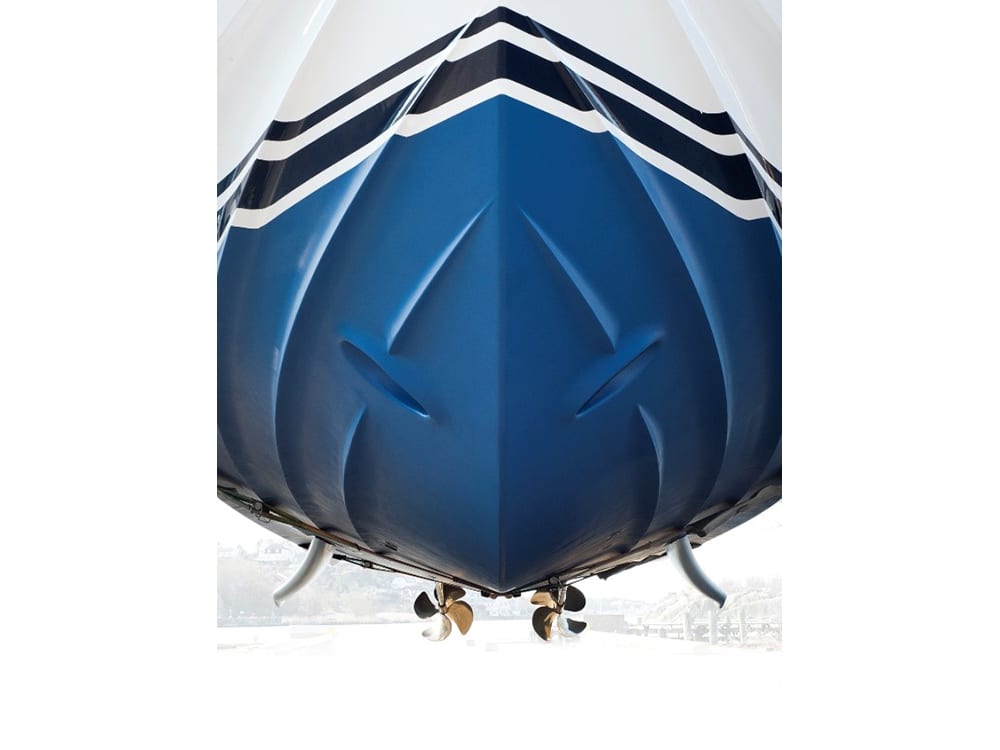
Advantages of Vector Fin stabilizers include the fact that their power increases with speed exponentially and that they generate lift as well as stability, which negates the effect of drag (unlike straight fins). Vector Fins also provide both at-rest and underway stabilization, allow you to bank into turns, and reduce unwanted motions of sway and yaw by up to 30 to 50 percent compared to straight fins. They counteract crosswinds and list, are lighter than gyros by thousands of pounds (depending on size) and allow maintenance of bearings and cylinders to be done in place. Those using hydraulic power can typically use a PTO (power take-off) hydraulic pump on the boat’s engine to get free power underway (it uses AC from a genset or shorepower at rest). An accumulator in the system means less noise and instant response. In fact, the system is virtually silent. The stabilizing force of Vector Fins is directed more vertically than straight fins, increasing efficiency and lift; you can therefore use smaller fins for the same power or larger fins to gain 30 to 50 percent more power than straight fins.
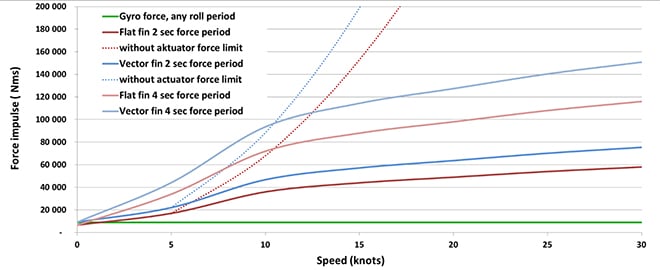
Disadvantages of all fins include the fact that they are appendages and can therefore cause entanglement or be damaged. They create drag, which may be offset by gains in fuel efficiency and speed in the case of Vector Fins. They can also cause sway and yaw, and at anchor they are limited by the length of the fin’s stroke. Also, they need to be positioned roughly in middle of boat so when retrofitting an older boat this may sometimes pose a challenge. Their location also requires ample structure and support for the loads generated. Having said that, a gyro similarly requires significant structural reinforcement and presents similar space challenges.
From a cost standpoint, a detailed analysis of expectations, requirements, and each boat’s suitability should be undertaken by the installer doing the work, but all else being equal, Vector Fins may be equal to or possibly a little less than a gyro installation. There are many factors that will dictate higher and lower costs—for example structural refits needed to add a gyro sometimes make a big difference. Another factor is whether there is space to install either system, and/or what existing equipment will need to be moved in order to create the space for a gyro or fin system.
One of the greatest variables in any stabilization decision is the owner’s expectations. What’s most important? Stabilization at any speed, or optimizing for at-rest performance? If at-rest stabilization is the priority, a smaller gyro will cost less than one that is two or three times the size, which may be what is required for any-speed stabilization. For any-speed stabilization, the equipment cost of a Vector Fin system would be significantly less than a gyro system. We know of boats on which a second and even a third gyro have been added to get satisfactory stabilization; for these boats, a Side-Power Vector fin system would have cost far less.
- More: Electronics , Imtra , Sponsored
- More Electronics
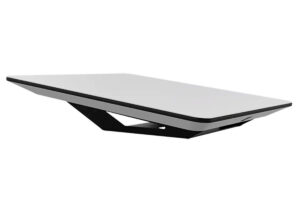
KVH Expands Starlink Maritime Options
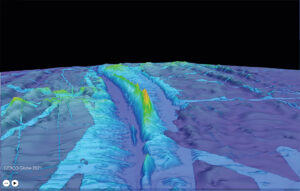
Mapping The World’s Oceans
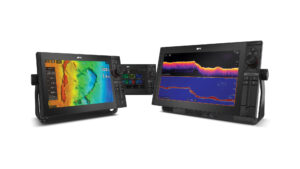
Future-Proofing Multifunction Displays

Global Navigation Satellite System Offers Waypoint Accuracy
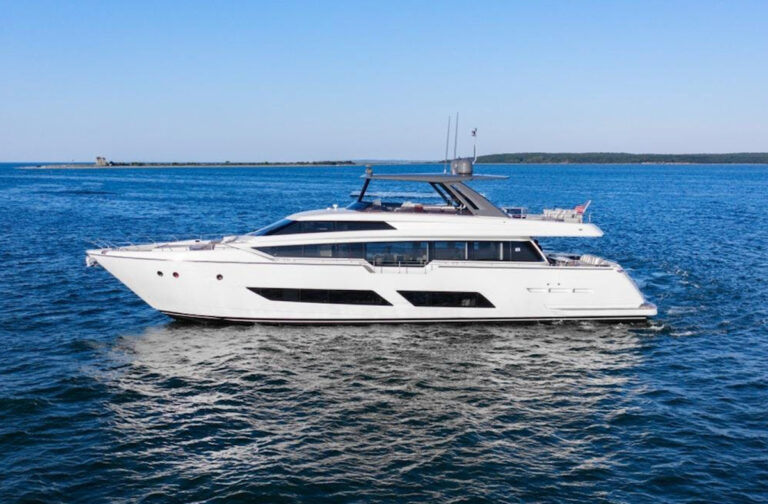
For Sale: 2021 Ferretti Yachts 850
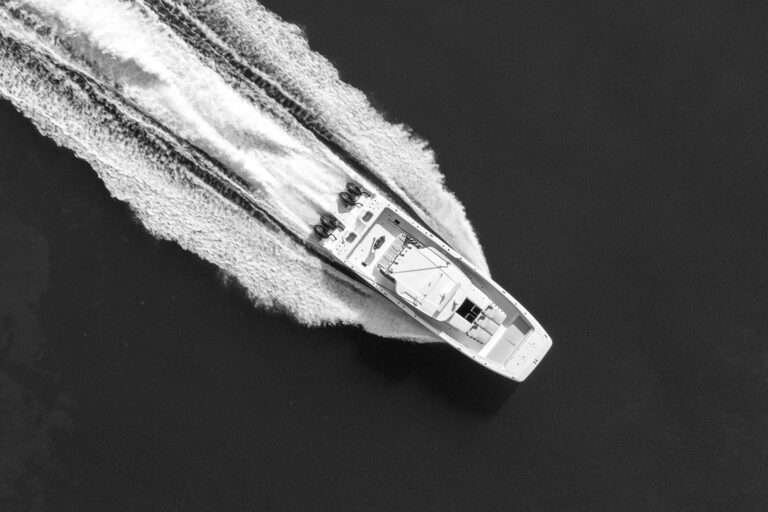
Aquila 47 Molokai Reviewed

For Sale: Ocean Alexander 78 Enclosed Bridge

- Digital Edition
- Customer Service
- Privacy Policy
- Terms of Use
- Email Newsletters
- Cruising World
- Sailing World
- Salt Water Sportsman
- Sport Fishing
- Wakeboarding
Sailboat Keel Types: Illustrated Guide (Bilge, Fin, Full)
The keel type is one of the most important features of your boat. But the different designs can be confusing, so I've set out to create a very clear guide that will help you understand sailboat keels once and for all.
What are the most common sailboat keel types? The most common sailboat keel types are full-length keels, fin keels, bulb keels, wing keels, bilge keels, and lifting keels. Full keels are popular among cruisers, while fin keels are generally used for racing. Bilge keels and lifting keels are typically used in tidal waters, on small fishing boats for example.
In this article, we'll explore the most common keel types together. I'll use diagrams to really hit home the differences of all these keel types, and we'll discuss what keel types are best for liveaboard, ocean cruising, and lake weekend trips. After reading this article, you'll know what to choose - and why.
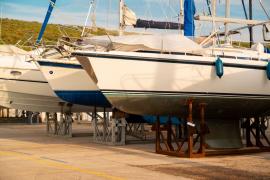
Sailboat Keels Explained
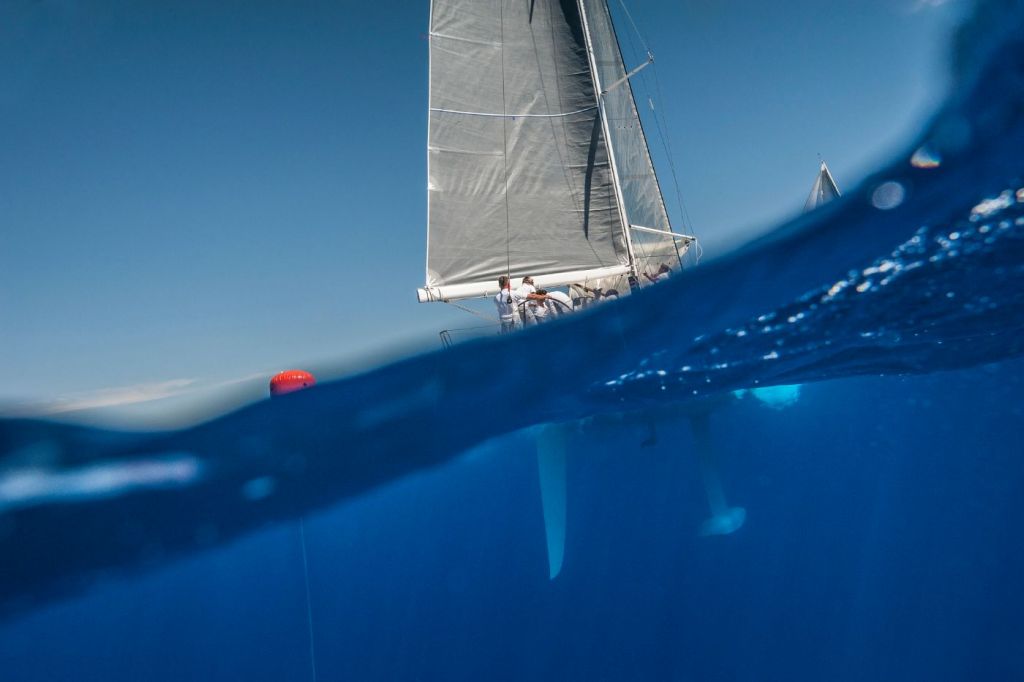
On this page:
Overview of sailboat keel types, keel types: fundamentals, modified full keel, centerboard.
If you just want a quick overview, here's a list with the most common keel types and a short description. More detail will follow below.
The most common keel types
- Full keels run from front to aft and are the most stable keel type, making them the most popular cruising keel.
- Fin keels offer the best performance but are less comfortable. This makes them popular for racing. Fin keels are bolted on to the hull and generally run deep and thin.
- Bulb and wing keels are both variants on the fin keel.
- Bulb keels carry additional ballast in the tip, making them more stable.
- Wing keels have two tips at the end of the keel, which reduces crossflow, improving directional stability.
- Bilge keels are double fin or double full kees, which allows the boat to be beached, making them the most popular keel for tidal waters.
- Lifting keels are moveable keels that can be lowered and raised, allowing the boat to enter shallow waters as well.
- Centerboard keels are a pivoting lifting keel, allowing to sail both coastal and inland waters.
- Leeboards are fins on the sides of flat-bottomed hulls boats, making a keel unnecessary.
Properties of each keel type
| Keel type | Comfort | Maneuverability | Speed |
|---|---|---|---|
| Full keel | +++ | -- | -- |
| Modified full keel | +++ | - | - |
| Fin keel | - | ++ | ++ |
| Bilge keel | + | + | - |
| Lifting keel | - | ++ | ++ |
| Leeboards | -- | -- | +++ |
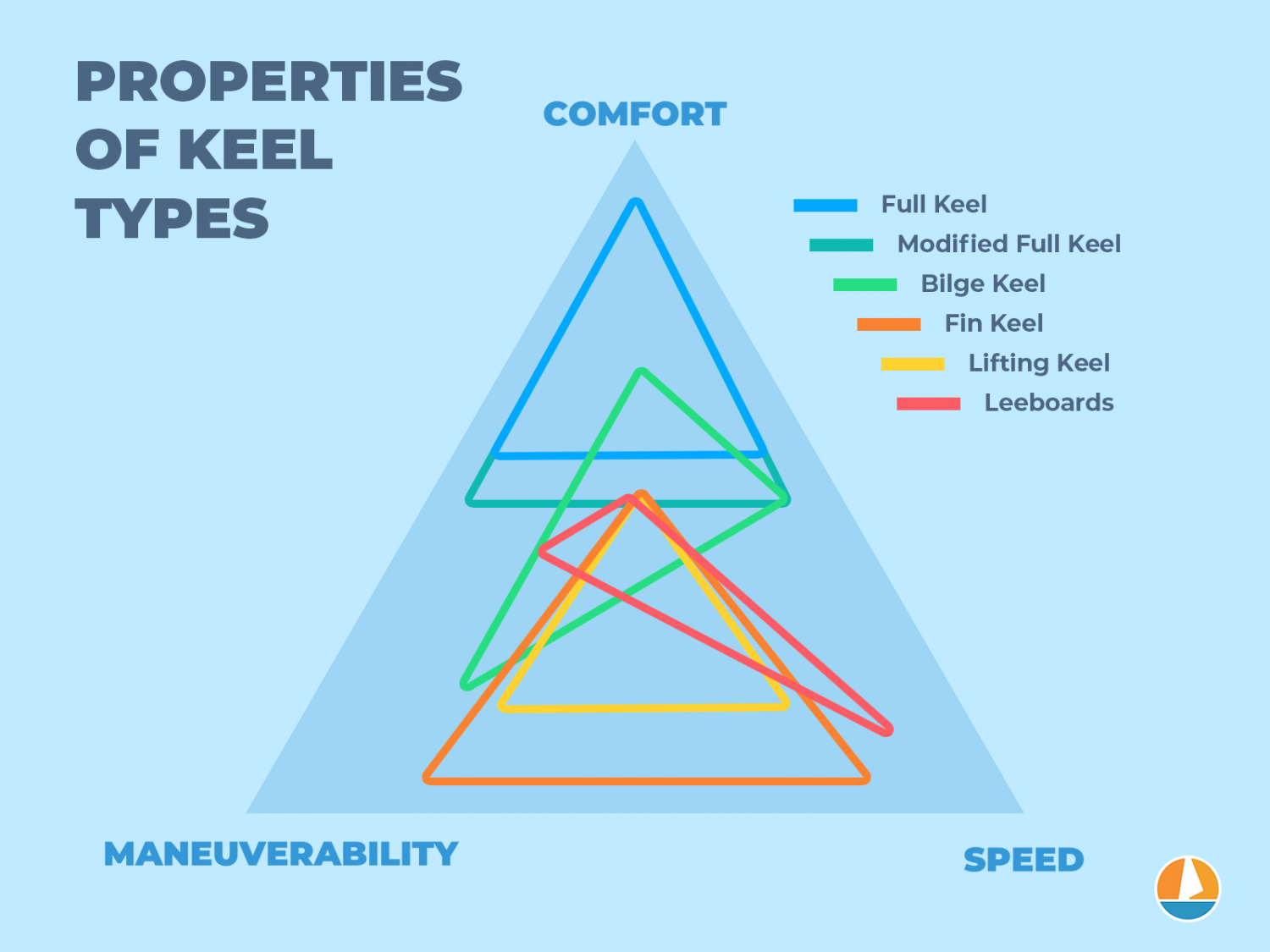
What does a keel do?
What does the keel do? A keel is a vertical blade running down from the hull. It is weighted and acts as a ballast, countering the boat's tendency to heel and preventing it from tipping over. The wetted surface under the waterline reduces slippage to leeward by creating a track, which counters the sideway force of the wind on the sails.
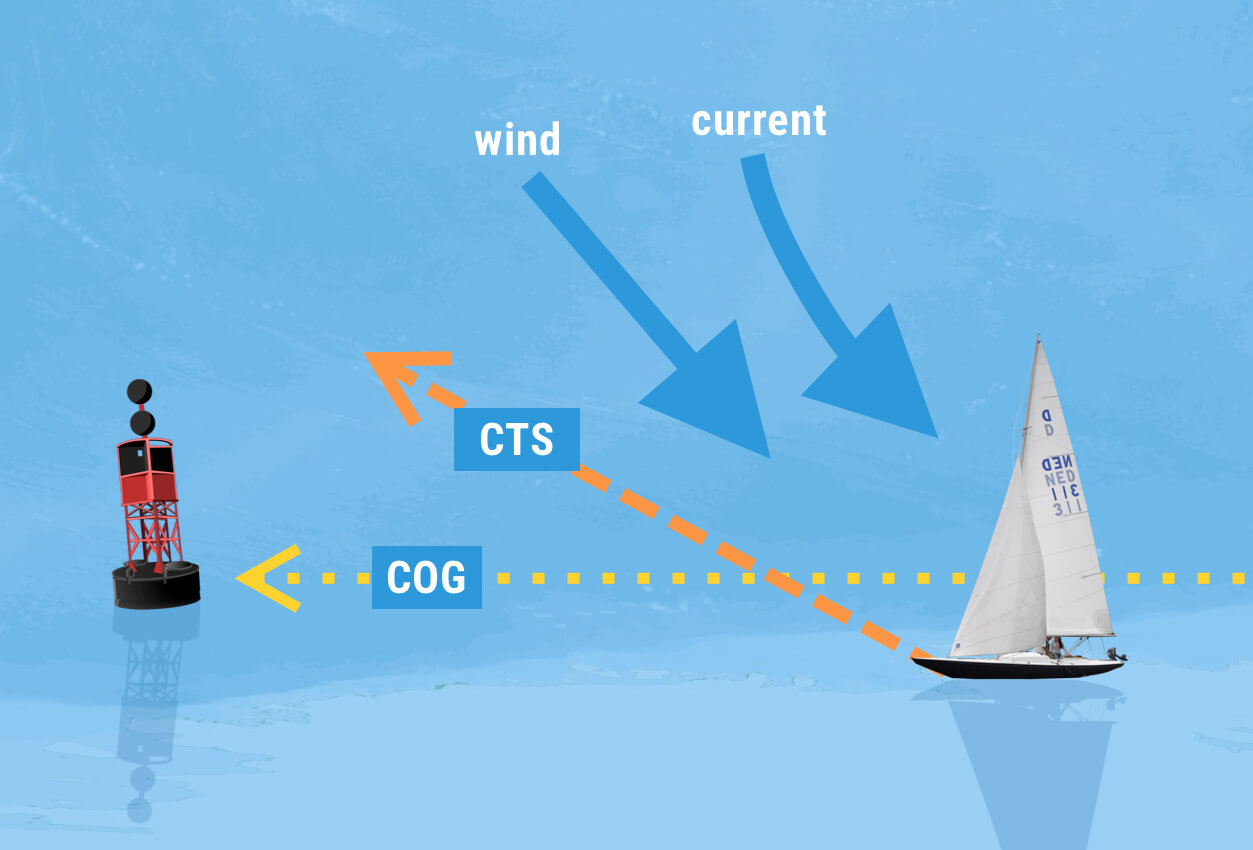
The reason sailboats don't tip over is that the weight of the keel counters the buoyancy of the hull, which means it will pull the boat downward. This downward force reduces heel and prevents the boat from rolling.
A canoe doesn't have a keel. Try stepping into that: it will want to roll.
It counters the horizontal force the wind puts on the sails. Whenever the force on the sails increases, the resistance of the water on the keel increases proportionally.
The heavier the keel, the less heel you'll get.
A keel reduces slippage to leeward. Slippage is simply the amount you fall off course because of the direction of the wind and current. Leeward is the side of the boat behind the wind.
So if you don't have a keel, you will fall off course quite a lot because the wind will push you over the water surface.
You will also heel quite a lot since there is nothing beneath the water surface to counter the force of the wind high up in your sails.
A keel fixes both of these issues and makes sailboats one of the most reliable boats in heavy winds and storms.
You can read on about how keels work here.
Keels can be classified by multiple dimensions. You can look at them from the side or the front. You can also classify them based on properties.
Before I dive into each keel type in-depth and show examples, let's make sure we have the same starting point.
There are essentially two sorts of keels:
Fixed keels
Movable keels.
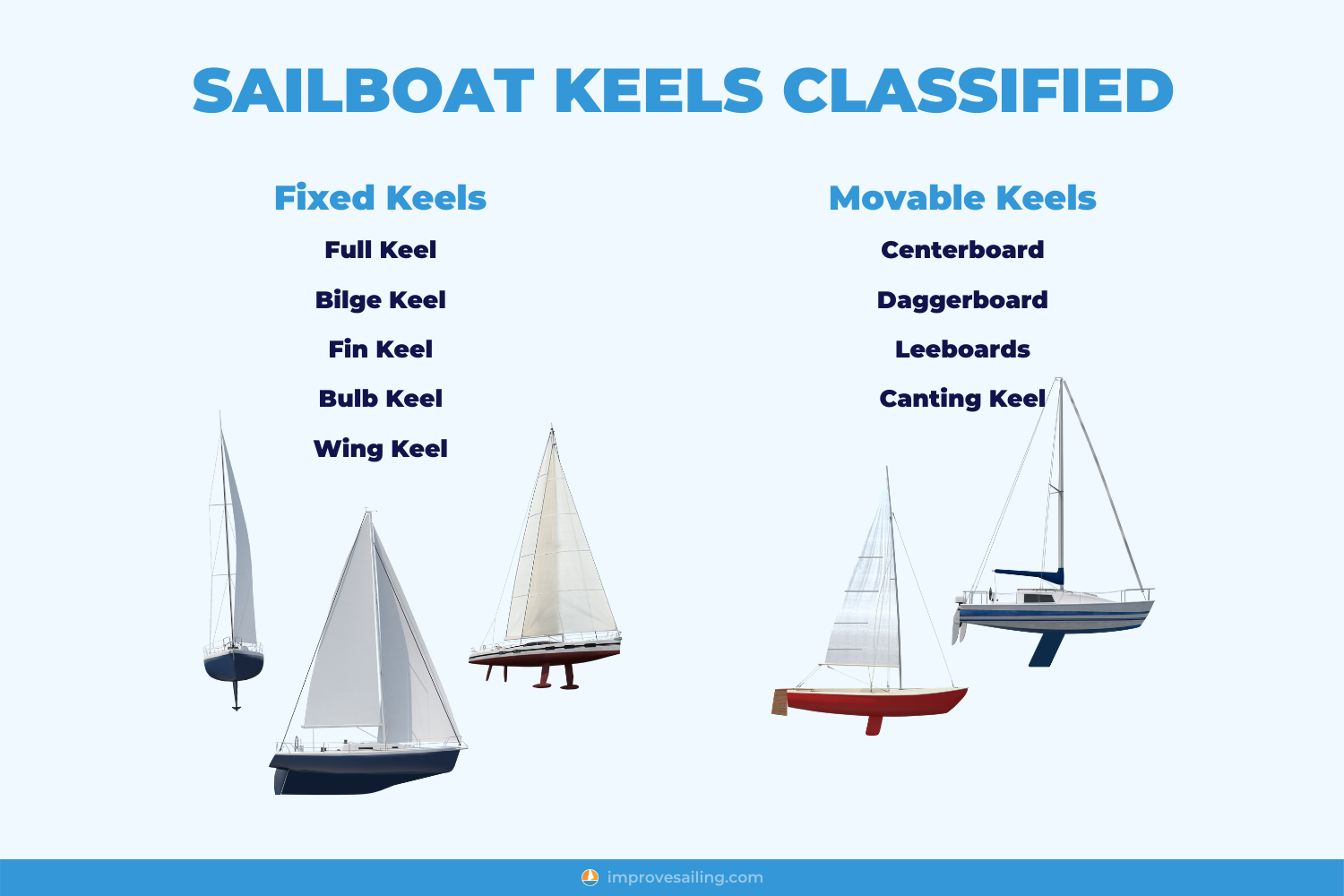
Fixed keels are keels that are integrated into the hull or bolted on. They can't be moved or lifted.
When looking at fixed keels, you can divide them up further based on the side view. There are three main categories:
Bilge keels
Full keels are more comfortable, provide better stability and protection, but are also slower than fin keels.
Fin keels are less comfortable, provide less stability, are more vulnerable, but they're also a lot faster than full keels.
Bilge keels are double keels: one on each side of the hull. This allows them to be beached, which comes in handy in tidal waters. They are generally a lot slower and less maneuverable compared to fin keels.
Movable keels can be lifted from the water, creating a shoal (shallow) draft, allowing the boat to enter both shallow waters and coastal waters. This makes it a very versatile keel type. There are two main designs:
Lifting keels
Lifting keels can be lowered and raised through a slit in the hull. Examples of lifting keels are the daggerboard and centerboard.
Leeboards are wooden swords attached to the side of the hull and prevent slippage to leeward, but they don't stabilize the boat, nor counter heel by adding ballast.
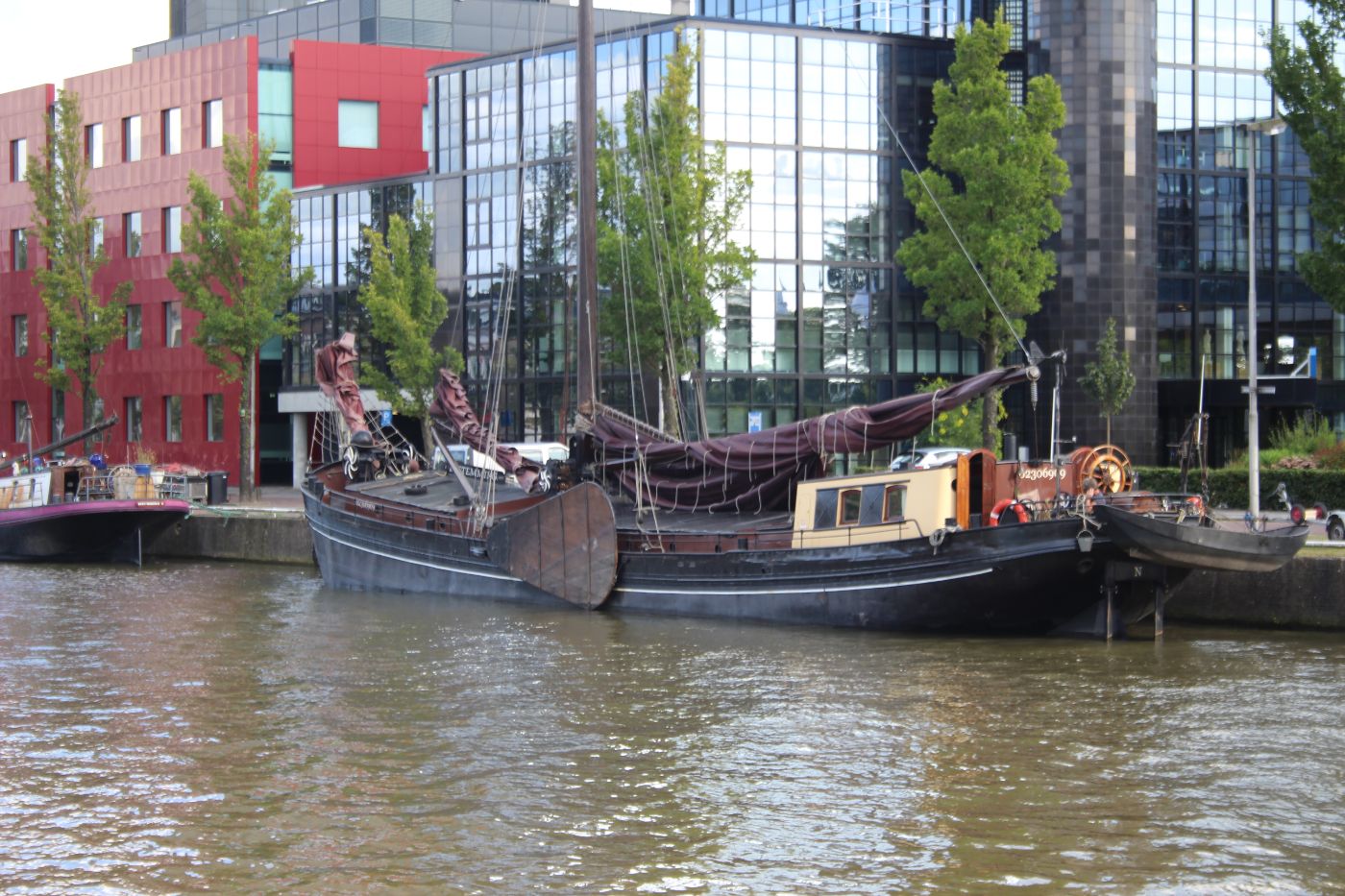
With fin keels, there are different tip designs available. The most common two tip designs are:
These are both variants of the fin keel. Generally, these keel designs are mentioned in one breath with full keels and fin keels, creating confusion on what kind of keel they are. But it's important to understand that they are a sub-category of fin keels.
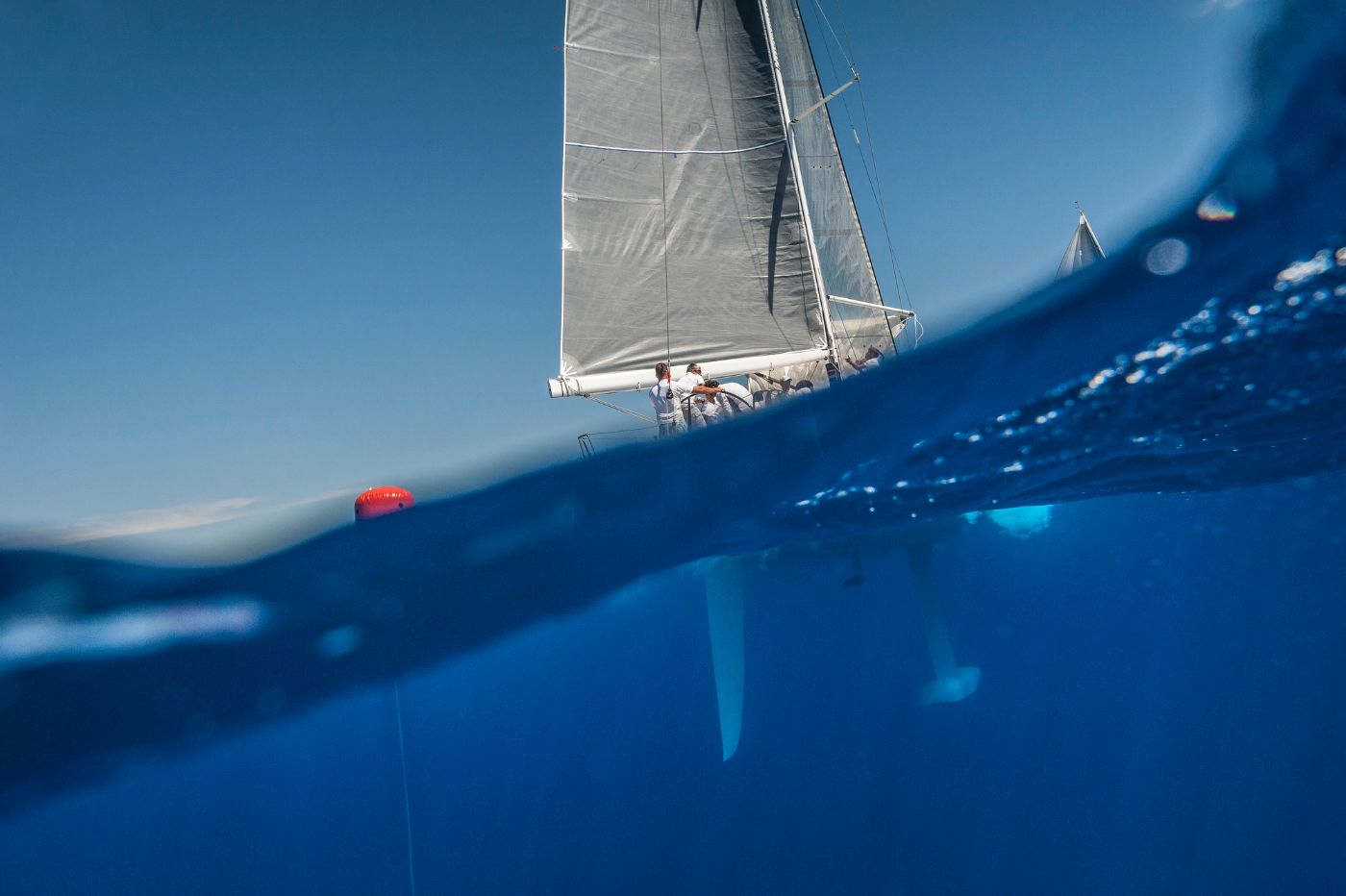
Rudder design
As with the tip of the fin, there are different rudder designs that may apply to both fin and full keels. The two most common rudder designs are:
Skeg rudder
Spade rudder.
A skeg is a structural part of the keel in front of the rudder that protects the rudder. The keel encompasses the rudder, preventing any rogue ropes, weeds, or rocks from damaging the rudder.
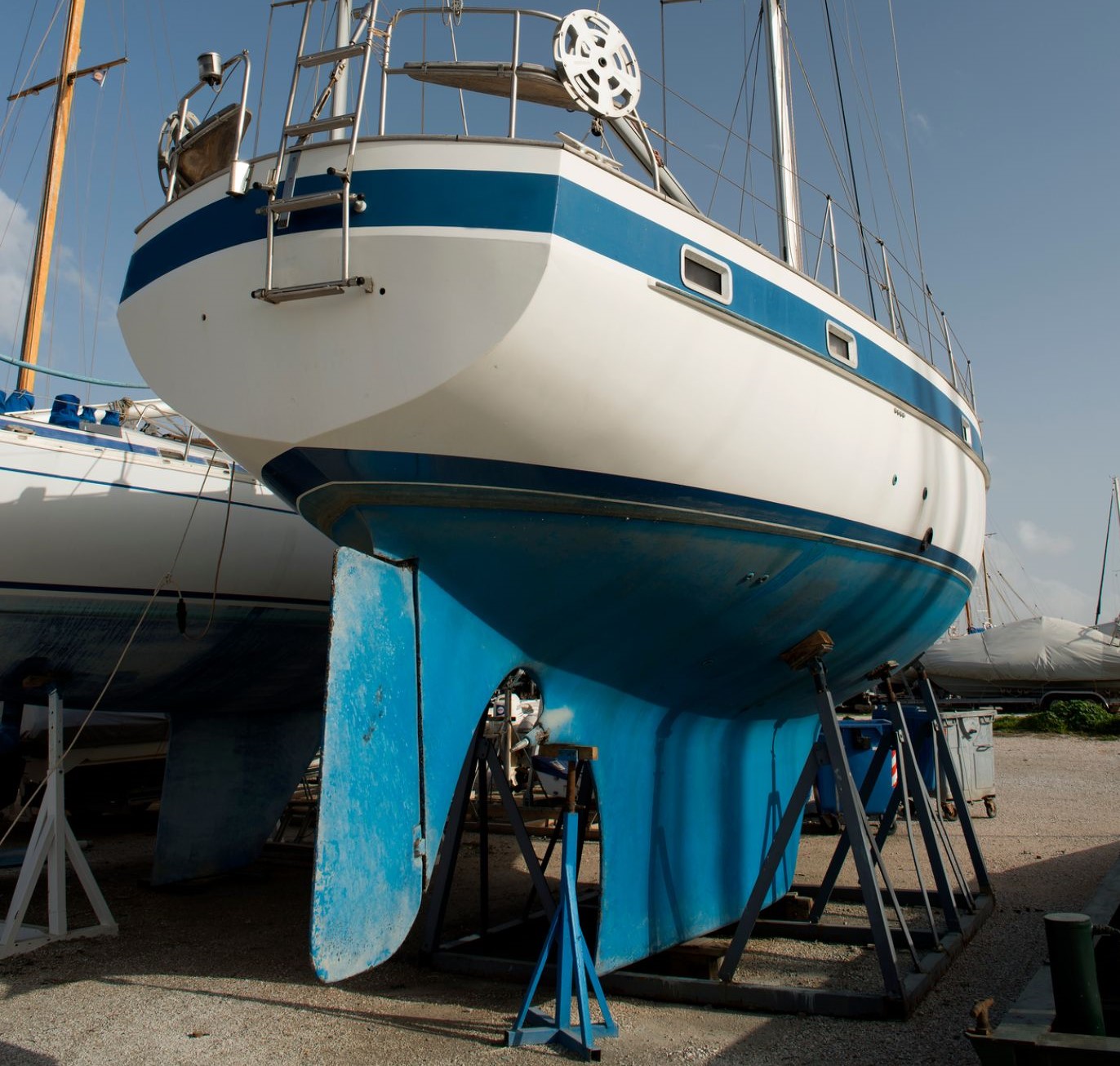
A spade rudder is an unprotected rudder: it doesn't have any structural protection from the keel design. It is simply attached to the hull. This design is very common.
Alright, we understand the big picture. Let's dive into more detail for each keel type and discuss the pros and cons.
Fixed keel Good for cruising and liveaboards Comfortable
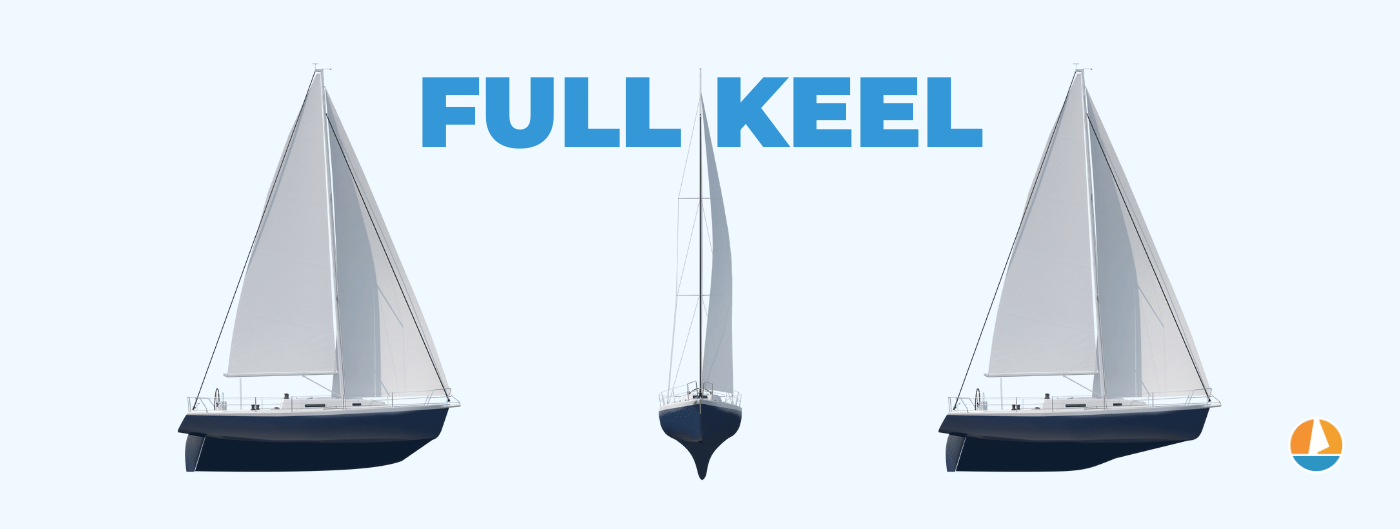
What is a full keel? A full keel runs from front to aft for at least 50% of the hull and is fully integrated into the hull. It has the largest wetted surface of any keel type, and it is also the heaviest. This results in directional stability and reduced heeling, providing the most comfortable ride, but also the slowest.
The wetted surface simply means the amount of water contact area. With such a large wetted surface, it decreases slippage to leeward the most of all keel types, while it counters heeling the most as well.
The full keel is the most comfortable and stable keel type available. However, comfort comes at a price. It delivers the worst performance due to this large wetted area. It is the slowest of the keel types, and it has the worst windward performance.
This makes full keels particularly great for longtime cruisers or liveaboards who prefer comfort over speed, but less ideal for daysailers who need to navigate in and out of slips regularly.
Since it runs for at least 50% of the hull, it doesn't need to run as deep as a fin keel, resulting in a more shoal draft.
Heavier keels result in increased displacement, so a full keel boat will need a larger sail area to compensate for its weight.
For a more detailed discussion on full keel advantages, I recommend reading William's excellent article 5 Surprising Advantages of a Full Keel Sailboat here.
Example sailboats with a full keel:
- Nicholson 22
- Island Packet 380
- Beneteau Oceanis 411 Clipper
- Beneteau First 50
- Jeanneau Sun Shine 38
- Dufour 455 Grand Large
There are a lot of great cruising boats with full keel designs , some of them considered classics.
Full Keel with skeg rudder
Full keels with a skeg rudder design have a protected rudder, thanks to putting a structural part of the keel directly in front of the rudder. This helps with fending off any hazards to the rudder, like floating pieces of rope, rocks, or garbage, and protects it in case of running aground. The skeg design ensures the rudder is nearly impossible to break off.
Fixed keel Good for cruising and liveaboards Faster than a regular full keel

What is a modified full keel? A modified full keel is a full keel with a cutout at the front, reducing the wetted surface slightly, which increases performance without sacrificing too much comfort and stability. After the full keel, it has the best directional stability and the least amount of heel.
The modified full keel is popular among (bluewater) cruisers, thanks to its increased handling and performance. Most modified full keels have a skeg rudder, ensuring it is well-protected.
The slightly reduced weight and wetted surface improve windward performance quite a lot, but it is still one of the most stable keel designs out there.
Example sailboats with a modified full keel:
- Hallberg-Rassy HR 40
- Dufour Arpege 30
- Beneteau Oceanis Clipper 281
- Jeanneau Sun Odyssey 37.2
Fixed keel Good for racing Fast
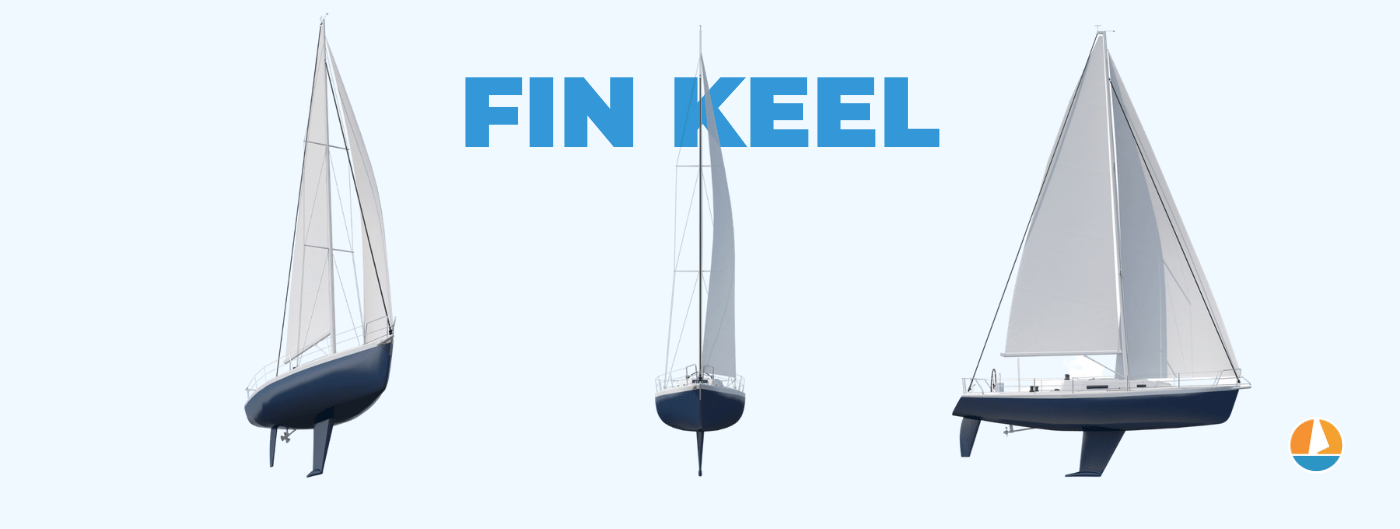
What is a fin keel? A fin keel is a long, weighted blade attached to the bottom of the hull. It is lighter, faster, and more maneuverable than a full keel, but also more vulnerable. The increased distance between ballast and sails provides a lever, reducing the need for a large wetted surface or additional ballast.
Fin keels are generally bolted onto the hull and run deeper and thinner than a full keel. They are also lighter. This helps increasing performance (a lot), making fin keels a lot faster in all situations.
There are some major disadvantages to fin keels, however. Fin keels are a lot less comfortable than full keels and allow for more heel and a less solid track, so less directional stability. Fin keels are also a lot more vulnerable than full keels. They can break off when running aground, or get damaged.
They are very popular among racers and perform better when maneuvering in tight spots, like getting in and out of slips.
Example sailboats with a fin keel:
- Catalina 30
- Jeanneau Sun Odyssey 36.2
Fin keel with skeg rudder
Fin keels with a skeg rudder use a small structural part in front of the rudder to protect it. This design is mostly integrated into the hull, making it less vulnerable, and a great compromise between speed and safety.
Fin keel with spade rudder
Fin keels with a spade rudder have a completely exposed rudder, and typically a fin that is simply bolted on. The keel isn't integrated into the hull, making it more vulnerable and less comfortable.
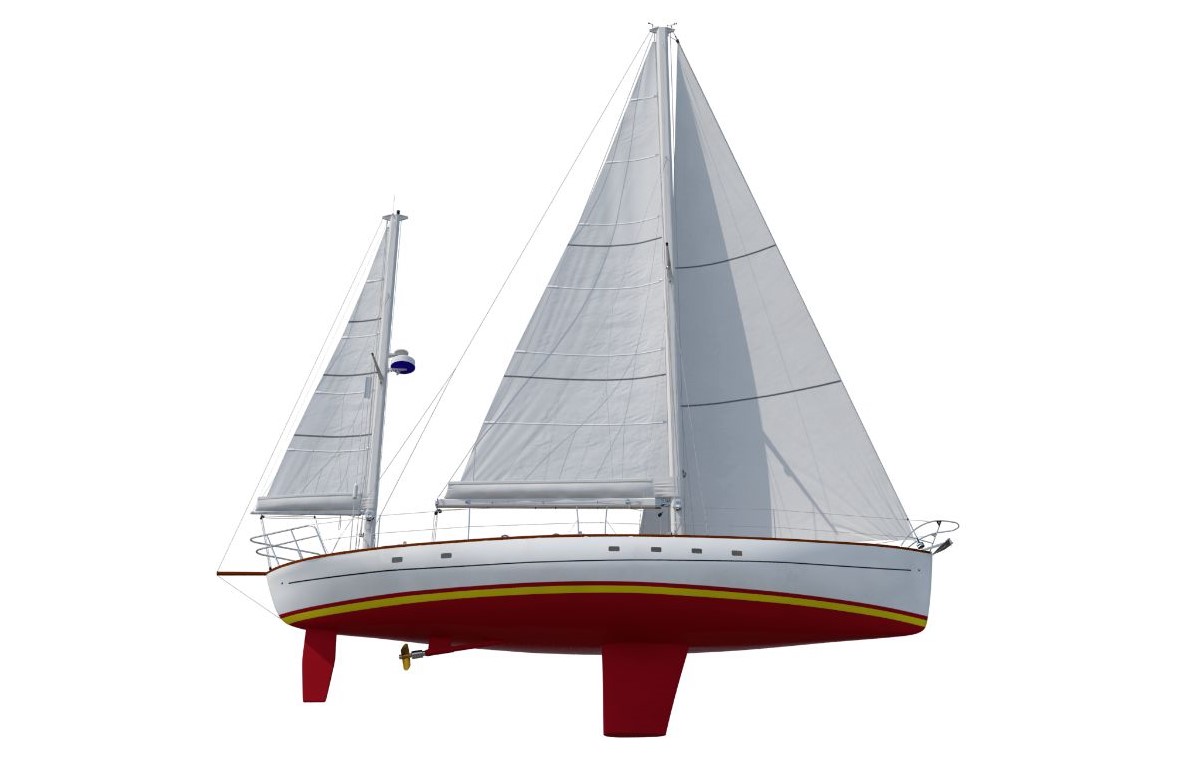
Fin keel variant Good for cruising Less crossflow
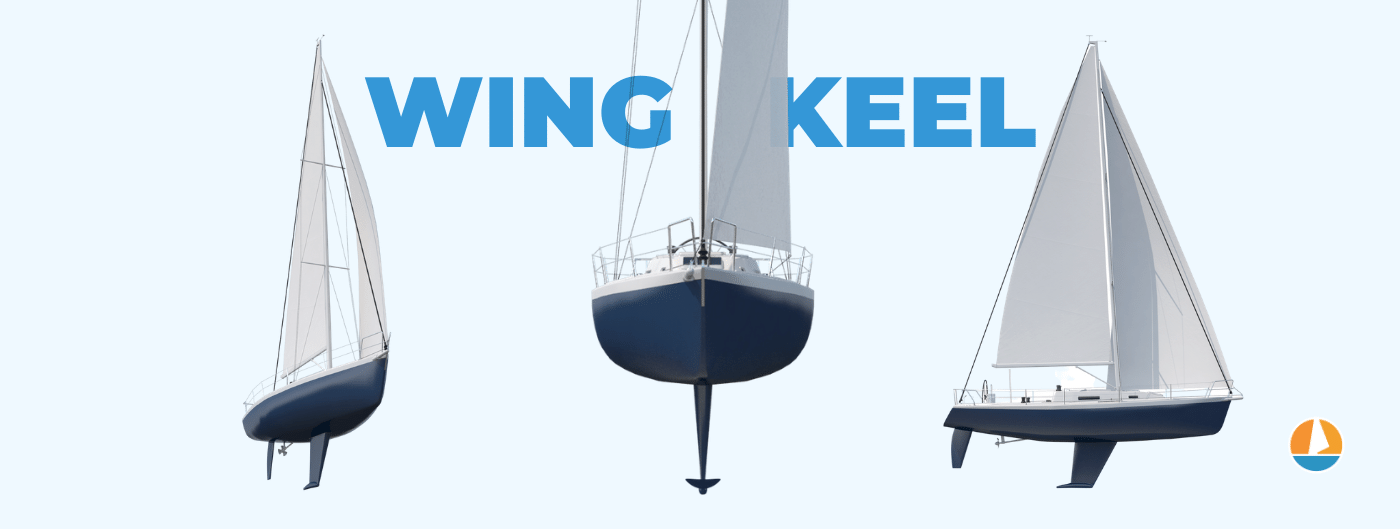
What is a wing keel? A wing keel is a fin keel with a horizontal foil at the tip, which is wing-shaped and generally weighted. Its shape reduces crossflow, improving directional stability, and its ballast decreases heel, resulting in a more comfortable ride. The addition of a wingtip allows for a shorter fin, reducing draft.
Wing keels are good for cruising since this design improves directional stability compared to a regular fin keel or a bulb keel.
We'll discuss the wing keel's advantages and disadvantages in more detail in this article.
Fin keel variant Good for cruising Stability
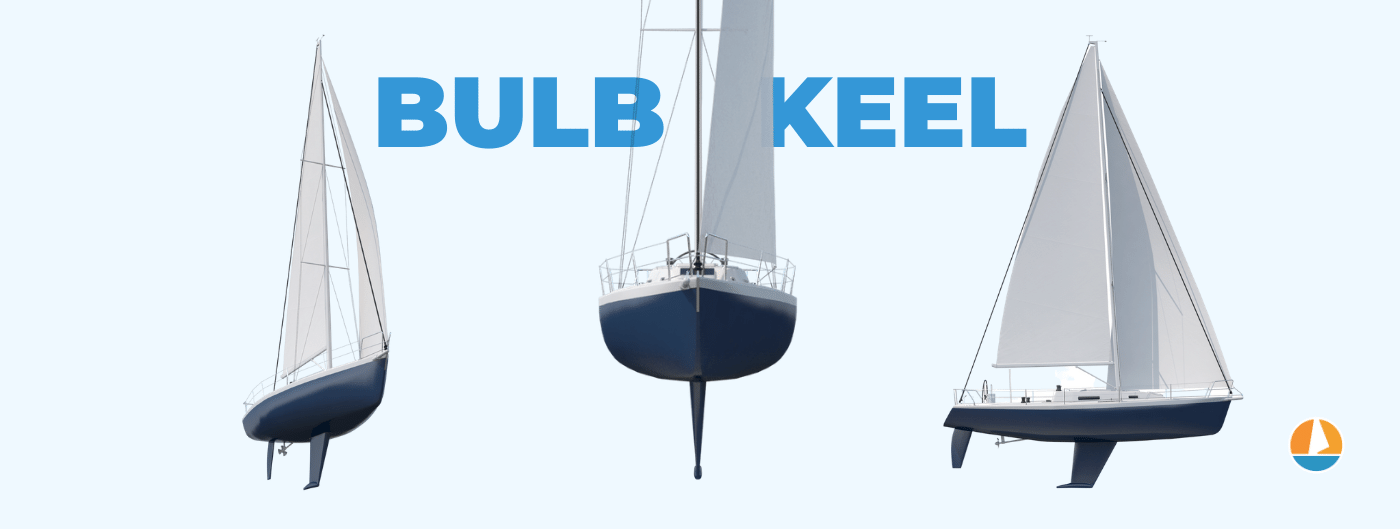
What is a bulb keel? A bulb keel is a high-aspect-ratio fin keel with additional ballast at the end, which generally has a bulb or teardrop shape. This ballast improves stability and utilizes the distance between force and counterforce as a lever. This design reduces the need for a deep fin, resulting in a shoal draft.
By placing the weight at the largest possible distance from the force on the sails, you need relatively little extra weight for the same reduction in heel, making bulb keels very effective for cruising.
This design reduces the wetted area while increasing the weight of the keel just slightly, which increases sailing comfort big time.
Example sailboats with a bulb keel:
- Bavaria B/One
- Beneteau First 24
Fixed keel Good for racing Can be beached

What is a bilge keel? A bilge keel is a twin keel which uses double fins, allowing the boat to be beached and rest on its keel upright. Bilge keels have double the wetted surface, which increases comfort and directional stability while decreasing heel. Modern bilge keels often provide decent windward performance, thanks to better design.
The bilge keel does sacrifice speed compared to the fin keel but doesn't necessarily offer worse performance overall. Older designs performed considerably worse than other keels and were especially slow.
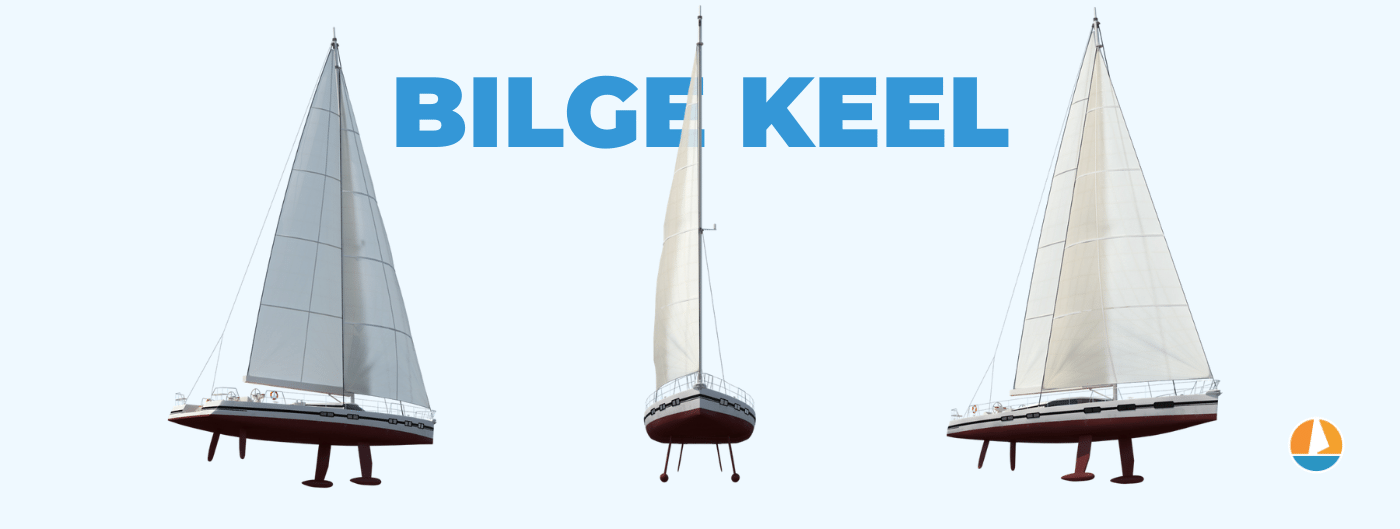
Bilge keels have some major advantages over full keels and fin keels. The most important is that the boat can be beached, making it a popular design in tidal waters. Bilge keels are especially common along the British coastline, where fishermen keep their boats in tidal harbors.
Another major advantage is that the boat can be stored resting on its keels, making dry storage and maintenance a lot easier.
Of course, there are many more pros and cons to the bilge keel , which we go into here.
Example sailboats with a bilge keel:
- Dufour Dynamique 62
- Hunter Duette
- Patagonia Patago 39
- Macwester 27
Lifting keel Good for daysailers Versatile

What is a centerboard? A centerboard is a type of retractable keel that rests on a hinge and can be lowered through a slot in the hull. It folds out like a pocket knife and allows you to increase or reduce the draft of the boat. Centerboards are mostly used on small fishing boats.
The centerboard is a very versatile keel type, allowing you to have both a very shoal draft for inland waters, as well as steadying the boat and reducing heel for larger bodies of water, or even oceans.
I've sailed a Cornish Crabber with a centerboard for a week, and while we stayed inland, having the option to increase the keel depth really came in handy when crossing the IJsselmeer (a former sea in The Netherlands).
There's more to the center
Olaf Roethele
https://www.theyachtmarket.com/en/new-boats/cornish-crabbers/adventure-17/218/
My name is Olaf and I am the owner of a Cornish Crabber 17 Adventure boat.
I would like to ask you if you can imagine to install on this boat a Torqeedo 2.0 Pod motor? Therefore i guess a modification of the keel/skeg is necessary ?!
Best regards from Uruguay,
You completely missed the hybrid planing/water-ballast keel of the Macgregor range
Thanks a lot for this explanation
Roger Bannon
Very well written article which provides an excellent guide for us small wooden boat builders. Thanks.
Leave a comment
- New Sailboats
- Sailboats 21-30ft
- Sailboats 31-35ft
- Sailboats 36-40ft
- Sailboats Over 40ft
- Sailboats Under 21feet
- used_sailboats
- Apps and Computer Programs
- Communications
- Fishfinders
- Handheld Electronics
- Plotters MFDS Rradar
- Wind, Speed & Depth Instruments
- Anchoring Mooring
- Running Rigging
- Sails Canvas
- Standing Rigging
- Diesel Engines
- Off Grid Energy
- Cleaning Waxing
- DIY Projects
- Repair, Tools & Materials
- Spare Parts
- Tools & Gadgets
- Cabin Comfort
- Ventilation
- Footwear Apparel
- Foul Weather Gear
- Mailport & PS Advisor
- Inside Practical Sailor Blog
- Activate My Web Access
- Reset Password
- Customer Service

- Free Newsletter

Beneteau 311, Catalina 310 and Hunter 326 Used Boat Comparison

Maine Cat 41 Used Boat Review

Cheoy Lee Clipper 36 & 42 Used Boat Review

Aluminum Cruisers: The Basics for First-Time Buyers

Tillerpilot Tips and Safety Cautions

Best Crimpers and Strippers for Fixing Marine Electrical Connectors

Thinking Through a Solar Power Installation

How Does the Gulf Stream Influence our Weather?

Stopping Mainsheet Twist

Working with High-Tech Ropes

Getting a Clue for the Blown-Out Clew

Monel Seizing Wire is Worth the Extra Cost

Fuel Lift Pump: Easy DIY Diesel Fuel System Diagnostic and Repair

Ensuring Safe Shorepower

Sinking? Check Your Stuffing Box

The Rain Catcher’s Guide

Mastering Precision Drilling: How to Use Drill Guides

Giving Bugs the Big Goodbye

Windlass Replacement on an Island Packet 40

Galley Gadgets for the Cruising Sailor

Those Extras you Don’t Need But Love to Have

UV Clothing: Is It Worth the Hype?

Preparing Yourself for Solo Sailing

How to Select Crew for a Passage or Delivery

Preparing A Boat to Sail Solo

On Watch: This 60-Year-Old Hinckley Pilot 35 is Also a Working…

On Watch: America’s Cup

On Watch: All Eyes on Europe Sail Racing

Dear Readers

Chafe Protection for Dock Lines
- Sailboat Reviews
A Look at Sailboat Design: Fin Keels vs. Full Keels
Details like keel design count when considering cruising sailboats..

Photos by Ralph Naranjo
When a keel tears away from a sailboats hull, it makes the loss of a rig or rudder seem like a minor inconvenience. History shows that its an uncommon occurrence, but because we now annually hear of such incidents, weve decided to take a closer look at keels and see what keeps the ballast where it belongs.
The International Sailing Federation (ISAF) Offshore Special Regulations devotes pages to helping sailors prevent and respond to a crew overboard incident. There is nothing about how to handle the loss of a keel or ballast bulb. Some might say this is because such occurrences are so infrequent, while others note that, if youre still upright once the ballast breaks off theres not much you can do other than blow the sheets, douse the sails as quickly as possible and attempt to stop any leaks.
When solo sailor Mike Plants Open 60 Coyote lost her lead bulb in 1992, Mike was lost at sea. Other adventure-sailors have survived near instantaneous capsize precipitated by keel loss. In 2003, round-the-world racer Tim Kent and his crew capsized when Everest Horizontal lost its ballast on the way back from Bermuda. US Sailing Safety at Sea Committee Chairman Chuck Hawley was aboard the racing sloop Charlie, on the way back from Hawaii, when a loud groaning sound led to a deep heel as the lead peeled away from the keel bolts and ballast headed straight to the bottom. This encounter at least had a happy ending thanks to the crews quick actions to douse sail. Apparently the keel had been cast with too little antimony (an additive that causes lead to become a harder alloy). The point here is that keeping the keel attached is as important as keeping the crew safely on board. And for the offshore monohull sailor, preventing a keel loss, like preventing crew overboard, requires some informed forethought.
A ballast keel on a sailboat is a classic example of potential energy poised in a balancing act. The buoyancy of the hull itself offsets the effect of thousands of pounds of lead or iron. At rest, gravitys attraction for the dense material strains against the buoyancy of the hull, and the adjacent garboard region is continuously in tension. Few sailors spend much time contemplating how keel bolts corrode and what cycle-loading does to the resin matrix comprising the garboard region just above the ballast. What is apparent, is that the attachment material, whether it be wood, metal or fiber reinforced plastic (FRP), must be able to support a mass of metal weighing as much as a small truck-and do so day in and day out for decades.
Underway, every tack causes the rig and sailplan to try to lever this ballast package free from the hull. And when the helmsman starts daydreaming about lobster for dinner and wanders off course onto a granite ledge Down East, the keel designed to handle sailing loads takes it on the chin. Its easy to see why experienced designers and builders lose sleep over their decisions about keel shape, structure, and what kind of safety factor should be built into the structure.
Its surprising to discover that with better materials and computer-aided design, we still hear about incidents such as the Rambler capsize in the 2011 Fastnet Race (PS, May 2012). Just as significant is a spate of smaller race boat keel-ectomies that have caused ISAF to send out a cautionary note to sailors around the world, and introduce new structural standards for race boats. Keeping the ballast attached to the boat involves an awareness of a chain-like set of failure points. And one of the most difficult decisions each designer must make is how to marry foil efficiency with a structural safety margin that covers the boats intended usage and the unintended use of the keel as a depth sounding device.
For decades, engineers and naval architects have had to contend with some racing sailors Icarus-like quest-a trend that prioritizes shedding weight and making the keel foil a long, thin appendage with a high-aspect ratio. Though not quite a flight toward the sun with wings made of wax and feathers, some race-boat scan’tlings walk a fine line between lightweight and structural failure. The challenge lies in attaching a lead bulb on a high-tensile steel foil to a lightweight, high-modulus, FRP hull. Interconnecting the dense metallic ballast to the lower-density foam/fiberglass hull structure is a true engineering puzzle. Part of the challenge lies in the dissipation of point loads (confined to a relatively small area) and how to handle the resulting stress risers. A stress riser is the point at which theres an abrupt change in a materials flexibility, such as where a stiff, fin keel meets the more elastic hull bottom. In FRP composites like those found in a balsa-cored hull, stress risers are a likely place for delamination to occur. Over time, these can result in the failure of the FRP composite.
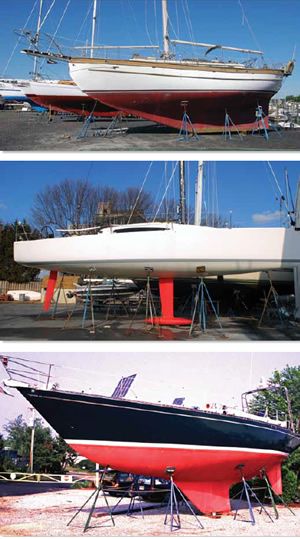
The see-saw effect of the keel counteracting a vessels righting moment is a mathematically predictable energy transfer. Even the effect of groundings such as those that turn hull speed into a dead stop can be quantified. But its the cumulative effect of fatigue (localized structural damage caused by cyclical loading) and corrosion that are harder to pin down.
The term allision refers to hitting a fixed object such as a granite ledge or coral reef. Naval architects analyze the energy transfer and evaluate the stress and strain characteristics that occur. The recognition that the keel-to-hull connection must endure even more punishment than is doled out in heavy-weather sailing episodes is at the heart of how structural specs are devised.
Designers also must consider the jack-hammer-like pounding of a keel on a reef in surf, and realize that there are limits to the abuse a keel and hull can endure. With this in mind, its reasonable to assume that sailboat keels should be built to handle sailing induced loads for decades. It is the extra safety factor built into the boat that defines what happens when the sandbar is a rock pile.
What is harder to anticipate are the unusual encounters that can inflict serious damage to the keel connection. Take, for example, what happens when a sailboats deep fin keel is wedged in a rocky cleft and a good Samaritan with a big powerboat attempts to pivot the sailboat using a line attached to the bow. The distance from the keels vertical centerline to the stem may be 20 feet or more, and with a couple of thousand pounds of bollard pull, the 20-foot lever arm creates a rotary force that can spike to 40,000 foot-pounds or more. This level of torque goes well beyond what most designers and builders model as sailing loads, and its likely to seriously damage the boat.
In plain low-tech talk, extreme fin keels provide a valuable performance edge, but they come with their own set of downsides that every owner needs to be aware of. In essence, the more radical the keel shape, the better the crew must navigate.
A couple of decades ago, PS Technical Editor Ralph Naranjo ran a boatyard and had a client who liked to cut the corners during Block Island Race Week. His first spinnaker reach into a granite boulder stopped the boat and shoved the companionway ladder upward six inches. This underscored how an allision that causes the keel to stop abruptly transfers a shock wave through the entire hull. The resulting compression cracked several transverse members in the New York 40 and damaged the core in the canoe body near the garboard.
The FRP repairs had to be tapered and all delamination problems resolved. The moderate-aspect-ratio lead fin keel absorbed a good deal of the blunt trauma. Judging from the cannonball-size dent on the leading edge of the lead keel, it was clear that the impact was significant. The dent offered grim proof of the advantage of having soft lead instead of steel as keel ballast. New floor frames were added, the broken transverse members were replaced, and the boat was off and sailing.
The next season, the boat had another Block Island encounter, and only because the Petersen-designed New York 40 was a pretty ruggedly built boat was a second repair even considered. This time, an equally violent keel-to-hull trauma came from an on-the-wind encounter with a different rock. The extent of the delamination was greater than it had been in the first go round, and more extensive core removal and repair was required. The keel was dropped in order to check the bolts and the garboard. With the bilge fully opened for the FRP repair work, the repair crew made a pattern of the canoe body dead rise and fore and aft contour. As the glass work was being completed, they fabricated a stainless-steel grid that would spread keel loads fore and aft as well as athwartship. The new grid reinforced the keel attachment and returned the sloop to the race course.
Afterward, Naranjo and the owner discussed the details of the repair, including the possibility of hidden, widespread damage from the two groundings. These included the dynamic loads imposed upon the chainplates and rigging, the likelihood of hidden resin-cracking, and potential for more delamination and core shear linked to the torque induced by the accident. In short, any serious allision causes overt and hard-to-detect damage far from the actual impact zone, and these can lead to more problems down the road. When buying a used boat, look for a good pedigree, but also look for signs of previous blunt-force trauma. A good surveyor will be skilled in such structural forensics, and he or she will do more than comment on the gelcoat shine.
In the early days of wooden ships and iron men, a lack of dense metal ballast put less point-loading in the garboard region of the hull. Bilges free of cargo were filled with rocks or tighter-fitting granite blocks cut for more compact stacking. The principal of ballasting a vessel was to lower her center of gravity (CG) and create both an increase in the righting arm and a greater righting moment to offset the heeling moment created by the rig and sail plan. The keel also helped lessen leeway and would evolve into an appendage that added lift.
Movable ballast had a few downsides, not the least of which was its propensity to move in the wrong direction at the very worst moment. Even small boat sailors have found out what can happen to unsecured pigs of lead ballast when the boat heels far enough over for gravity to overcome friction. Whether stones, lead, movable water ballast, or a can’ting keel are used to augment the boats righting moment, a sailor must anticipate the worst-case scenario. This is when the weight ends up on the leeward side of the boat and a bad situation can turn into a real catastrophe. Fixing or locking ballast in place, controlling the volume of water put in ballast tanks, and limiting the can’ting keels range are sensible compromises.

Internal ballast, the ballast inside a keel envelope thats contiguous with the hull, is still seen in many new boats. Island Packet is an example of a builder has stuck with this traditional approach of securing ballast without using keel bolts. Its a sensible design for shoal-draft cruisers, and the upsides are numerous. These high-volume, long-range cruisers arent encumbered by the demands prioritized by light displacement, performance-oriented sailors. Instead, Island Packets combine a rugged laminate and a long-footed, shallow-draft keel. This may not place the lead or iron ballast as deep as the tip of a fin keel, but it does keep the all-important CG low enough to deliver a powerful righting moment along with shoal draft.
In order to deliver the high angle of vanishing stability (AVS) also known as limit of positive stability (LPS), designer Bob Johnson puts what amounts to an internal bulb in the very lowest point in the boat. This long slug of iron or lead (depending on the model) is then covered by Portland cement, locking it in the Island Packets monocoque structure. The result is a contiguous FRP structure spreading keel loads efficiently over a considerable amount of hull skin. Keel bolts and the infamous garboard seam are completely eliminated. This approach to sailboat keel design dates back to the Rhodes Bounty II and other prototypes in the production world of sailboats. Now over 50 years old, many of these boats continue to have a tenacious grasp on the lead or iron that they hold.
Encapsulated iron ballast is much less desirable than encapsulated lead, and its sad to see builders skimp on this. Iron, or even worse steel, has been used in many Far Eastern encapsulated keels. It works as long as water and the resulting oxidation havent caused expansion and cracking of the seal. Lead is also denser than ferrous metal, and therefore, the same amount of ballast will have a smaller volume and create less drag.
Encapsulated ballast starts to be less appealing as keels become more fin-like and high-aspect ratio. The reason for this is that the geometry of the support changes, focusing more load on less area of the hull. As hull shapes evolved into canoe underbodies with hard turns in the bilge, and fin-like keels became thinner, deeper, and with shorter chord measurements (thickness), the concept of encapsulated keel became impractical. The Cal 40, Ericson 39, Pearson 365, and a long list of similar genre boats signified the end of an era when performance racer/cruisers would be built with encapsulated ballast.

External Ballast
Performance-oriented sailors and race-boat designers quickly latched on to hull shapes marked by deep-draft, foil-shaped, high-aspect ratio fin keels. From the late 60s to whats currently glowing on CAD screens in designer offices around the world, keels have grown deeper and shorter in chord length, and bulb or anvil-like tips have grown more and more common.
The design development was sound, lift was enhanced, and deeper-not longer-became the answer to getting to windward faster. The challenge was not only in designing an efficient shape, it lay in creating an attachment means that minimized foil flex and twist, retained the low drag coefficient, and still had the ability to withstand an occasional, albeit modest, grounding.
During this same period, marine surveyors and boatyard techs began to see moderate groundings result in major structural problems. The classic example was the allision that produced a moderate dent in the lead at the leading edge of the keel tip. In many cases, further inspection revealed cracks radiating outward from a knot meter or depth sounder mistakenly placed just ahead of the keel. An even closer look often revealed grid damage or a cracked bulkhead just aft of the last keel bolt. Like the New York 40 mentioned earlier, this was a result of a shock wave radiating through the hull structure. As we learned in Mrs. McCrearys science class, Bodies in motion tend to stay in motion, unless acted on by an equal and opposite force. Fin keel sailboats encountering abrupt energy transfers,tend to endure more damage than their long-keel counterparts.
A forensic look at the Achilles heel of external ballast highlights a few pitfalls. First the good news: Lead absorbs impact well, consuming much of the imparted energy through deformation. However, the translation of the remaining energy from the metal keel foil and keelbolts into an FRP hull is where we often find stress risers, and point loading linked to material and hull shape changes. The near right-angle interface between a modern sailboats canoe body and its deep fin keel is a classic load-path hotspot. In the old days, fiberglass techs spoke of oil-canning or the dimpling of a large section of the garboard as tacks were swapped.
Today Naval Architects use Finite Element Analysis (FEA) to better engineer hull structure. Colorized graphics pinpoint load concentration, glowing bright red in the region where the keel joins the hull, the epicenter of the oil-canning. A common solution to coping with this high-load focal point, is to eliminate core in the region and to gradually increase the unit schedule (layers of FRP), or to add an internal FRP grid. Maximum thickness of a keel stub is located where the keelbolts penetrate the stub. In this region, the solid glass thickness is often equal to the dimension of the keel bolt diameter or even greater.
Laminate thickness at the keel bolts is only part of the equation. Just as important is how the transition to the general hull laminate transpires. A bullet-proof keel stub that immediately transitions into a core hull comprising two units of laminate on each side of the panel creates whats equivalent to a tear-on-the-dotted-line weakness. Transitions that involve sharp angles and marked differences in panel strength require a well-reinforced taper that spreads loads gradually rather than abruptly.
Occasionally, we see massive metal frameworks used in the bilge as support for keel bolts; these structures need to be carefully engineered to not create the same hard spot fracture points. When carefully tapered in order to gradually introduce more flex, the problem is abated, as it was in the repair of the New York 40 mentioned earlier. The stainless-steel grid built to support the keel loads incorporated a gradual decrease in stiffness to the framework. The keel was carefully mated to the underside of this grid to ensure full contact (See Keel Bolt Repair Options, online). As a result, the crew relieved the hard spots at the end points and made the transition to the more flexible FRP hull less dramatic.
For cruisers, the take-away lesson is that extra reinforcement, a long garboard keel-to-hull interface, and internal transverse and longitudinal reinforcement really do pay off. Keep in mind that the extra weight this entails is all below the center of gravity and contributes to the secondary righting moment as well as keeping the water out.
This is a big departure from the way many modern production boats are built. They carry a skimpy ballast ratio of 30 percent or less, have less structure to support the keel and are not designed to handle unintended cruising consequences. There are exceptions, and its worth looking at the keel design and structure of the Navy 44 Mark II and the USCG Leadership 44 (see PS, August 2012). These boats utilize external ballast and are examples of rugged keel attachment. They have a relatively long keel-to-stub garboard junction, the laminate scan’tling meets American Bureau of Shipping recommendations, and both utilize an overabundance of 316 stainless-steel keel bolts and an FRP grid to keep the keel where it belongs.
There are many reasons why were seeing more keel problems today. On one hand, light, fast, race-boat design pushes the envelope, and thats probably OK. But when mainstream racer/cruisers start to suffer from lead loss, too much of one good thing (high-aspect ratio) and too little of another good thing (reinforcement) can begin creeping into design and construction.

RELATED ARTICLES MORE FROM AUTHOR
Leave a reply cancel reply.
Log in to leave a comment
Latest Videos

The Boat From True Spirit – Sparkman & Stephens

Top 5 Boat Hacks – Boat Maintenance Tips and Tricks

Pearson 30 Sailboat Review

How To Change Your Sailboat Engine Mounts
Latest sailboat review.
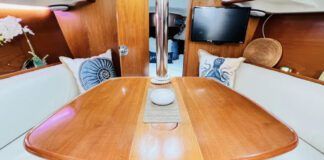
- Privacy Policy
- Do Not Sell My Personal Information
- Online Account Activation
- Privacy Manager
Yachting World
- Digital Edition

Finn dinghy: Farewell to Olympics
- Helen Fretter
- June 25, 2021
It has been a part of sailing in the Olympics since 1952, but this summer, when the Finn dinghy fleet takes to the waters of Enoshima it will be its final Olympic outing

This summer will be last time we see the Finn dinghy at the Olympic Games. In order to meet the directive from the International Olympic Committee for equal participation and events for men and women at the Paris 2024 Games, World Sailing made the decision to drop the Finn class from the Olympic roster, in favour of a mixed double-handed offshore event (along with a mixed kiteboarding relay race, while the mixed offshore event was itself recently ditched for separate Men’s and Women’s kitesurfing medals).
After the departure of the Star ahead of the 2016 Olympic Games, the Finn took up the mantle as longest serving Olympic class – a baton, which will now be passed to the 470 class.
The Finn dinghy is synonymous with greatness. It debuted as an Olympic class in Helskini in 1952, where gold was won by Danish legend Paul Elvstrøm, defending the heavyweight dinghy title he had won at London in the Firefly class.
Elvstrøm went on to win three consecutive Finn golds, setting the bar for a class that has been a rite of passage for many of the greatest sailors of all time. Jochen Schümann, Russell Coutts, Iain Percy and, of course, four-times Gold medallist Ben Ainslie fill the roll of honour.
With a 69-year Olympic history, the Finn is the longest standing item of Olympic sailing equipment, having been designed in 1949 by Swedish canoe designer, Rickard Sarby. The 1952 Games was also the first time the Soviet Union and People’s Republic of China took part, women track athletes ran no further than 200 metres, and the Fosbury flop hadn’t been invented, so seismic have the changes been to the modern Olympics since its introduction.

Finn dinghy class secretary, and author of several books on its history, Robert Deaves explains: “For many sailors, back then and today, the Finn became a lifestyle choice as much as an Olympic sport. Sailors would immerse themselves in a training routine, devoted to living and breathing the boat. The boat came to exemplify the Olympic motto of ‘Citius, Altius, Fortius’, as the sailors challenged themselves to become faster, better and stronger.
Article continues below…
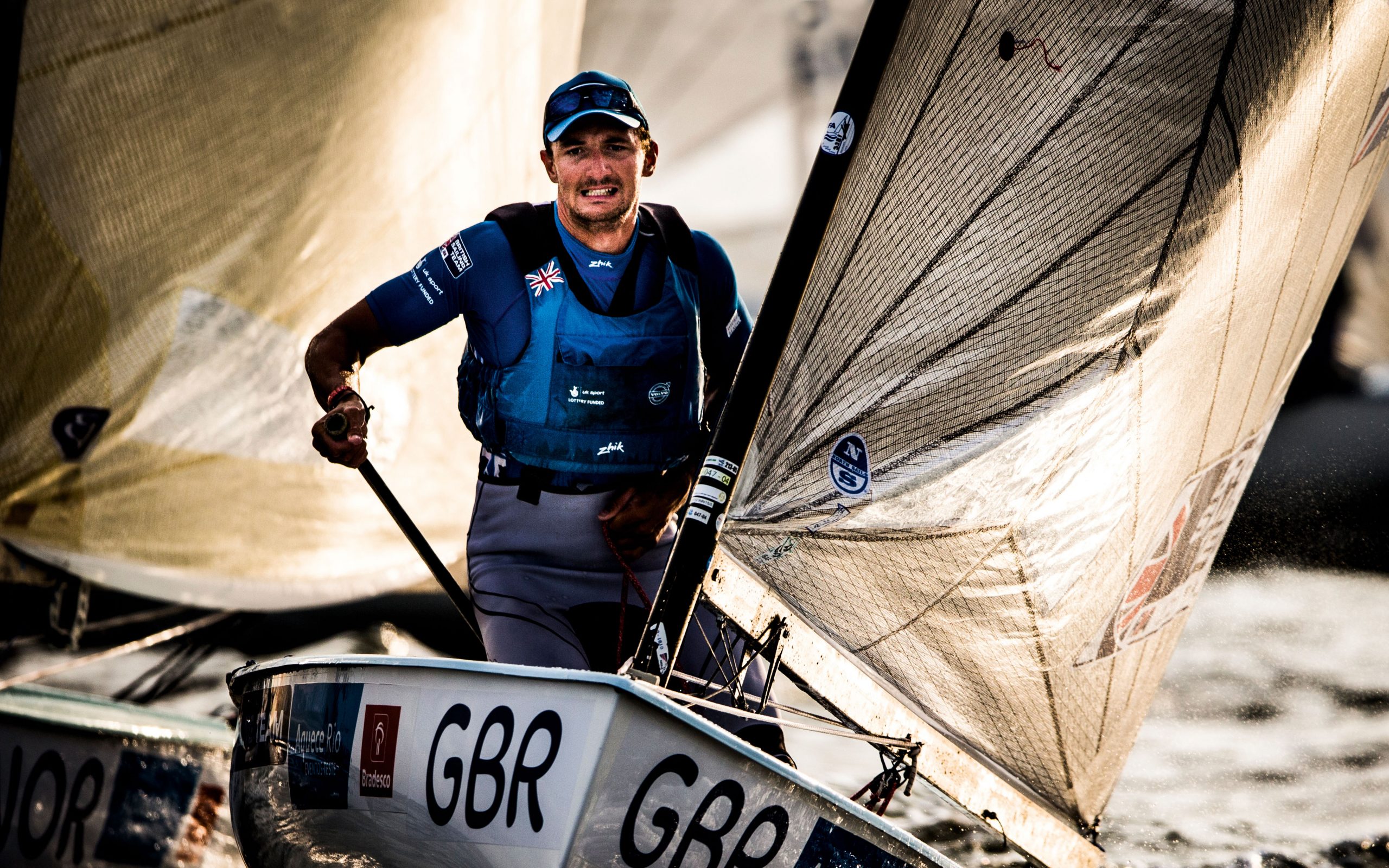
Giles Scott: Can the Brit secure a second gold in Tokyo?
Giles Scott is waiting. Like all of this year’s Olympic cohort, he is in a strange pre-Games limbo. Normally at…
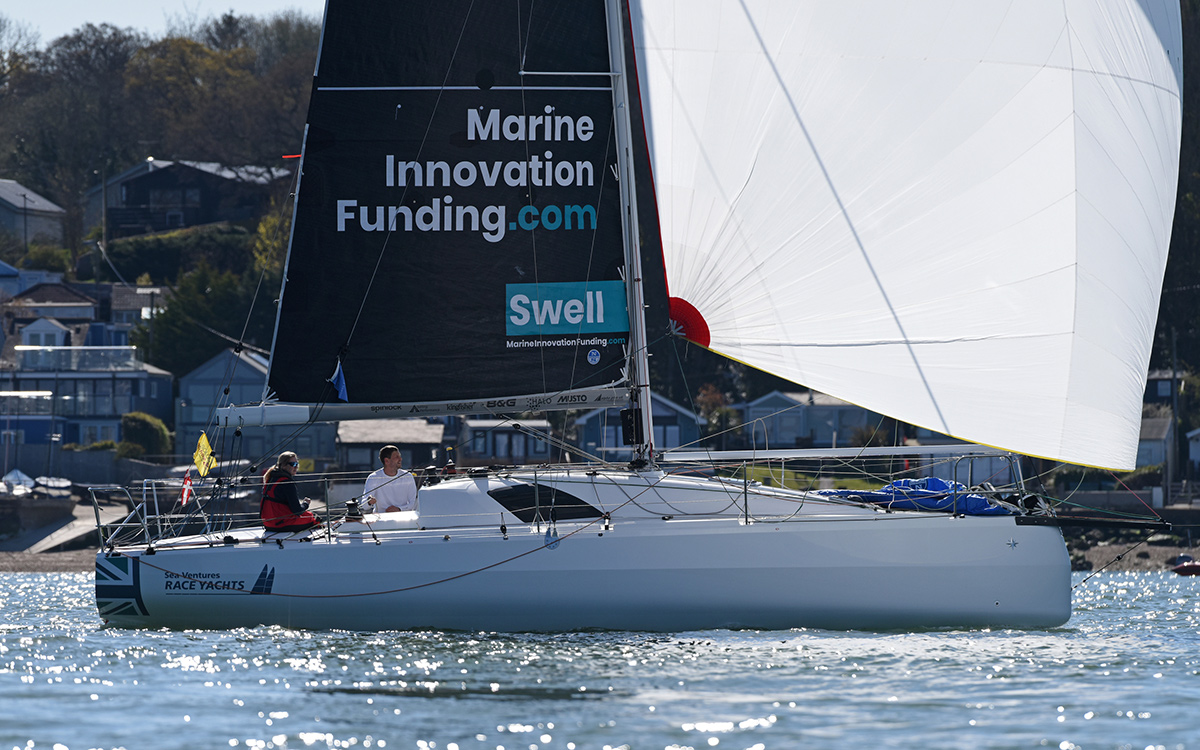
Shirley Robertson on why offshore racing should be in the Paris Olympics
With just three years until the 2024 Olympics take place in Paris, the Olympic sailing classes for the 2024 Games…
“The original boats had wooden hulls, wooden spars and cotton sails. Today’s Finns use modern materials such as carbon masts, Kevlar sails and GRP hulls, but the basic concept, shape and dimensions are the same.
“The key to the boat is twofold. First the hull needs the correct flexibility and ability to ‘twist’ through waves and gusts, and secondly the rig can be tailored to each sailor’s weight, height and sailing style. Improved technology such as carbon masts and GRP hulls made this process more scientific and repeatable. The objective is always creating power and speed, but also with the ability to depower automatically through the gusts, with the hull twisting and the mast falling off to open the leech.”
Ben Ainslie says part of the class’s appeal is that it is a complete test. “It’s a huge, huge physical challenge. To be successful in the class you have to be committed to your training, to the physical aspect of the sport, but also the technical challenges of making a Finn go fast set you in good stead for going into other areas, such as the America’s Cup. Understanding the dynamics of what makes the boat go fast is really critical to having a successful career.”
In 2018 the sport’s governing body, World Sailing, voted to replace the Finn dinghy at the Olympics with a mixed offshore class, in part due to the need for parity of men’s and women’s medals. The decision was much debated – not least following the IOC’s request that World Sailing propose an alternative, leading some to briefly hope that the Finn could be reinstated. But most believe the Finn’s days are forever over, leaving few Olympic options for heavier male dinghy sailors.
“I’ve always tried to stay away as much as possible from the politics side of World Sailing and class selection, and not really get involved,” says Giles Scott. “But I think it’s been a bit of a calamity of errors. It’s not been great that the IOC had to wade in. The Finn being on the butt end of that is obviously a shame, and I think every Finn sailor would say that because we do love the boat.
“But the one thing that stands out for me is that it is not necessarily the class, it’s the people, and the fact that there’s not really a replacement for the guys coming through that are too big to sail Lasers and 49ers.

“That’s the real shame because I think back and, if this had been happening 10 years ago or so, then I wouldn’t be an Olympic champion and I quite possibly wouldn’t have had the same doors opened for me in other forms of sailing.”
Ainslie concurs: “I think it’s a real shame. For the Finn class because of its history, but also for the sport of sailing, because it’s really hard to see an avenue at the moment for bigger athletes to compete in the Olympics and sailing.
“And I think that’s a real missed opportunity for the sport to be able to showcase athletes of that intensity at that size.”
Away from the Olympic circuit, however, there is every indication that the Finn will continue to flourish. The class not only runs enormously popular Masters events, but also Grand Masters, and even Grand Grand Masters, so lifelong is the loyalty of many Finn sailors to the design.
If you enjoyed this….
Yachting World is the world’s leading magazine for bluewater cruisers and offshore sailors. Every month we have inspirational adventures and practical features to help you realise your sailing dreams. Build your knowledge with a subscription delivered to your door. See our latest offers and save at least 30% off the cover price.
- (508)995-7000
- Locate A Dealer
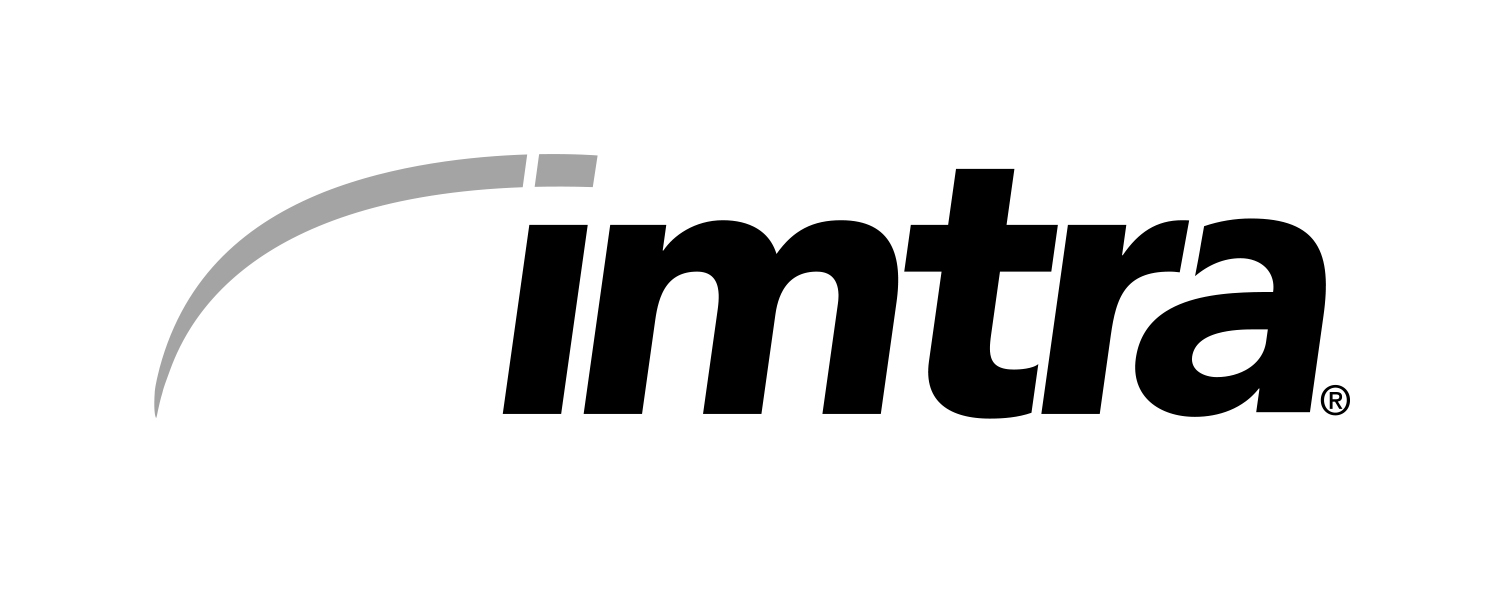
- Product Search
- AC Electric Thrusters
- eVision Proportional
- SEP Proportional
- Hydraulic Thrusters
- Upgrade Kits
- Installation Tools
- Hydraulic Parts
- Replacement Parts
- Controls and Accessories
- Control Panels & Covers
- Interceptors
- Parts & Accessories
- Courtesy Lights
- Deck Lights
- Navigation Lights
- Reading & Chart Lights
- Rope & Tape Lights
- Searchlights
- Underwater Lights
- Utility/Engine Room Lights
- Wall Lights
- Light Bulbs
- Vimar Switching
- Den Haan Rotterdam
- Imtra Marine Lighting
- Tranberg Lighting
- Anchoring Products
- Anchoring Switchgear
- Anchor Swivels
- Chain, Line & Rodes
- Chain Markers
- Chainstoppers
- Spare Parts
- Auto Anchor
- Muir Windlasses
- Wiper Products
- Washing Systems
- Seat Pedestals
- Table Pedestals
- Handrails & Ladders
- Access Hatches & Hinges
- Fynspray Pumps
- Libra Doors & Hatches
- Rudder Control
- Lilaas Parts
- Nauta Tanks
- Sola-Cure Shades & Blinds
- Battery Chargers & Monitors
- DC-DC Converters
- Marine Batteries
- Beclawat Marine Windows
- Product Catalogs
- Clearance Items
- Trade Shows & Events
- Virtual Boat Show Booth
- Video Library
- Trusted Brands
- Support Network
- Community Activities
- Industry Associations
- Inland Towboats
- Passenger Vessels
- Pilot Boats
- Offshore Wind
- Bristol Bay & Pacific Northwest Fisheries
- Atlantic Fisheries
- Harbor Tugs
- Ski Tow Boat
- Motoryachts
- Learning Center
- On-Line Retailers
- Besenzoni Service Agents
- Caribbean/Central America Dealers
- Sleipner Mobile Installers
- Document Library
- Ordering Information
- Shipping Information
- Shipping Costs
- Return Policy
- Warranty Claim Requests
- Trade Accounts
Imtra Learning Center
Imtra’s Learning Center is a great resource for everything you need to know about your boat’s equipment and systems. Everything from product overviews, product comparisons, buying guides, troubleshooting guides, maintenance tips and more can be found here, and it’s always being updated. Be sure to also check out our video library for product demonstrations, how-tos, webinars and much more!
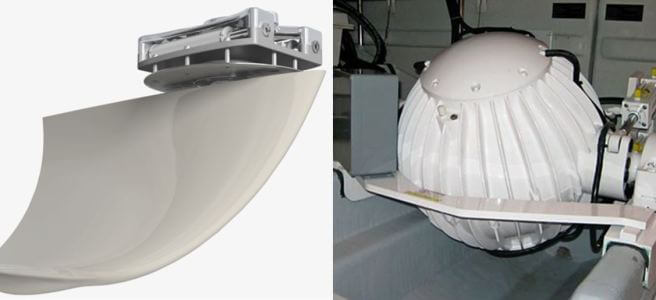
Fins vs. Gyro Stabilizers: 13 Questions Answered
Author: Conrad Taylor / Wednesday, March 18, 2020 / Categories: Stabilizers
Imtra product expert Prentice Weathers answers common questions that highlight the differences between fin and gyroscopic stabilization for boats.
Most owners want to reduce the motion that makes people seasick on their boat, and many have heard about stabilization systems provided by fin stabilizers and gyros . But which is better? And specifically, how do advanced curved-fin systems like Sleipner Vector Fins match up with the most popular gyro systems? Let’s start with the basics and go from there.
800x250.jpg)
What are the six degrees of freedom of a boat?
There are six motions a boat can make and some are more likely than others to make people seasick. Imagine drawing a line down the middle of the boat from bow to stern and another line from side to side, and finally a third line straight up from the center of the boat. The boat can move up and down, side to side, and forward and aft in the direction of each axis. It can also swing or rotate on each axis. Two motions per axis equals six motions total: surge, roll, pitch, sway, heave, and yaw.

Which boat motions most commonly make people seasick?
While all of the above boat motions can cause seasickness, the roll is the most significant factor, which probably won’t surprise anyone who’s spent much time in a boat. Another big factor is sway, the side-to-side motion. You don’t notice sway so much; it can be subtle, but it can really affect people. It’s not so much the degree of motion—how many degrees the boat rolls or how many feet (or meters) it moves in sway— that affects seasickness, but the combination of angle, frequency and acceleration of that movement. If you can reduce the degree and acceleration of the roll, you can go a long way towards reducing the incidence of seasickness.
What other factors affect how quick or sudden the motion of the boat is?
The hull design – combined with the wave’s size, shape and time between waves (frequency) – makes a big difference in how a boat feels and behaves. For example, a narrow, round-bottom boat (e.g. a sailboat) and a wide, flat-bottom boat (e.g. a powerboat) behave quite differently. You might think the flat-bottom boat would be more stable, and in smooth water, it is, but that also means it will hug the surface of the wave more readily in longer waves and that makes it harder to stabilize.
By comparison, the narrower, rounder shape typically will be easier to stabilize. Note these are general rules, and the bottom line is that the boat will roll the most when the natural roll period of the boat is equal to the roll period of the wave. In this scenario, the momentum of the rolling boat causes it to continue to roll even as the wave passes, thus creating the greatest degree of roll. Eventually, the boat will stabilize somewhat until the cycle starts anew.

Which boat motions can gyros and fin stabilizers counteract?
No stabilizer system will counteract some of these motions, particularly heave and to an extent, pitch. But Vector Fins in particular can make a big difference in yaw, roll and sway, which is good, since those last two are the two motions most likely to cause seasickness. Because gyros do not have an appendage in the water, they do not influence sway and yaw.
What is a boat gyro stabilizer and how does it work?
The gyro stabilizer is essentially a large, heavy spinning disc, turning at very high RPMs, sort of like a throwing wheel used to make a clay pot. As the boat rolls, the spinning wheel will naturally angles forward or aft, imparting a force on the hull in opposition to the roll. As a series of waves try to roll the boat, the gyro constantly tilts forward or aft, within the limits of the hydraulic cylinders controlling it. This “precession” of the gyro is governed by software that senses the motion of the hull and controls the rate of precession to avoid jerky, unnatural, and uncomfortable motion.
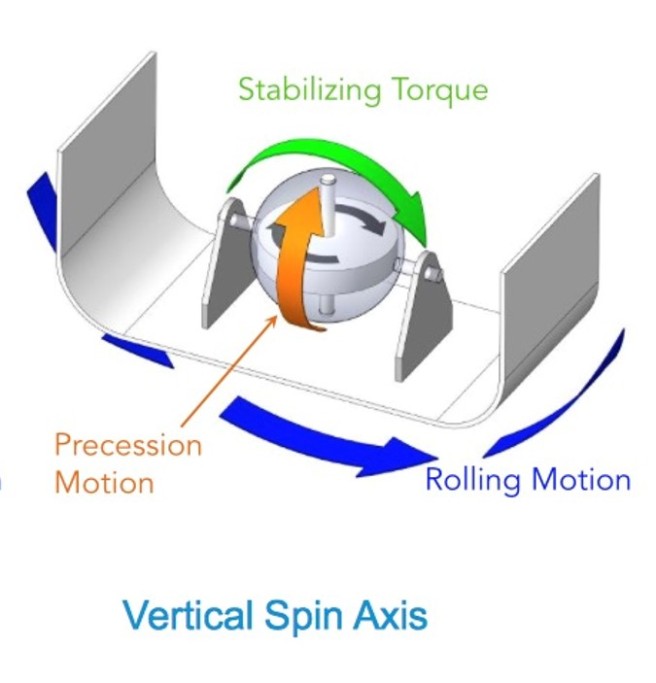
What are fin stabilizers and how do they work?
Think of an airplane, which you can bank by changing the air flow over the ailerons (trailing-edge flaps) on the plane’s wings and tail. Fin stabilizers use water flow in a similar way, causing a boat to “bank.” If the boat rolls in one direction, we angle the fins to generate an opposing force. If you have ever stuck your arm out of the car window on the highway, you know that angling your flat hand will cause your arm to go up or down depending on which direction you rotate your hand. The fins moving through the water basically create the same effect. When the boat is not moving, there’s no water flow across the fins, so motion is created by moving the fins rapidly side-to-side like a hovering fish. By creating a force in opposition to the boat’s roll, the boat will stabilize.

What motions impact the effectiveness of boat stabilization systems?
The frequency of the wave makes the most difference—that’s the time from the top of one wave to the top of the next. There is also something called the “roll period” of the boat. This is the time it takes for a boat to roll to one side, then the other, and then back to the center. A 3.5- to 4-second roll period is what people are most sensitive to in terms of motion sickness. It also happens to be the natural roll period of most motor yachts in the range of about 55 to 90 feet, so stabilizers become particularly useful on these yachts. Of course, stabilizers will control unwanted boat roll on any size boat.

Do gyro and fin stabilizers work better when a boat is at-anchor or underway?
When a boat is at-anchor or underway, both systems will improve stability in both situations if sized properly. Fin stabilizers work best when the boat is moving, but bigger fins are needed for optimum at-rest performance than for underway performance. That’s a trade-off that may lead to different decisions, depending on how a boat will be used. Gyros, on the other hand, work best when the boat is stationary, or moving at slow speeds; larger gyros are needed to provide good stabilization when the boat is underway. This also requires analysis of how the boat will be used and when the best performance is most important.
The fundamental difference between the two systems is that fins generate greater and greater force as the rate of water flow increases (i.e., the faster the boat is going). This force increases exponentially with speed, which is a massive advantage compared to gyros. A gyro system generates the same amount of force, no matter what speed the boat is moving, so it is less effective the faster you go.

When a boat is planing, it is hardest to stabilize; the boat becomes more rigid on a plane, so it wants to assume the angle of the wave. That is, it wants to roll with the wave. Due to the tremendous force generated by the foils at speed, here’s where you can take the greatest advantage of the fins’ underway capabilities—and in particular the advanced shape of Sleipner Vector fin stabilizers . The fins have more power to stabilize the boat exactly when the boat is hardest to stabilize, and as an added benefit, will counteract list from cross winds or weight distribution. Conversely, as mentioned above, a gyro’s force remains constant, restricted by the size and speed of the gyro flywheel, and it can’t correct for list.
In what special applications do gyros or fin stabilizers excel?
Gyros are often chosen for sportfish boats, especially on the East Coast where captains often back down really hard when a fish is on the line, and may also use thrusters to keep their position relative to the fish. The fin stabilizers need to center and be parallel to the keel when backing down. Reversing also generates a lot of cavitation and may damage the back of a fin after prolonged exposure. When backing down normally for docking or maneuvering, fins center quickly and there’s no issue.
On the West Coast, captains tend to fish differently and don’t seem to have this problem. On a workboat with nets, an appendage also may be less desirable.
What data is available on the effectiveness of Vector Fin and gyro stabilizer systems?
Before you buy Vector Fins or a gyro system , product manufacturers can take detailed boat-model data and simulate how the boat will respond in different sea conditions. You can model the roll of the boat and how different size fins or gyros will reduce the motion on a percentage basis, which enables decisions to be made about the best size to put on a given boat. It’s important to remember that not all waves are the same and over a period of time, there will not only be different sizes but different periods, which will amplify and reduce roll naturally. Stabilizer manufacturers can graph the effect of a series of variable-sized waves over time, with and without their system running, and then superimpose the two graphs to show the improvement. As an example, if you graph the motion over 10 minutes, there will be times when a stabilizing system may reduce the motion by, say, 92 percent and other times by less, say, 80 percent. It’s important to ask for the full graph, not a small segment of it, so you can see the true effectiveness over time. Below is an example from Side-Power simulating a Princess 72 with and without Vector Fins.


What are the pros and cons of gyro stabilizer systems?
Gyros have no appendage, they are relatively small and compact, and they are well-engineered to minimize the intense heat generated on the bearings by the spinning mass. Gyros come in an attractive package and work well in many circumstances.
Disadvantages of the gyro systems are that they are less effective underway, are heavy, and in some cases servicing requires removing the unit from the boat. For a 30-knot boat, a gyro has to be much bigger–perhaps bigger than space allows–to equal Vector Fins’ performance, so sometimes two or three gyros will be installed. The systems can take up to an hour to “spin up” before they provide full stabilization, also generate noise, may require structural reinforcement, and with few exceptions are wholly dependent on AC power off a generator. In certain sea conditions, their effectiveness is also limited by stroke or precession distance, and when it’s time to replace the main bearings, most gyros must be removed from the boat and returned to the factory for service.
What are the pros and cons of Side-Power Vector Fin stabilizers?
The advantages of Vector Fin stabilizers include the fact that their power increases with speed exponentially and that they generate lift as well as stability, which negates the effect of drag (unlike straight fins). Vector Fins also provide both at-rest and underway stabilization, allow you to bank into turns, and reduce unwanted motions of sway and yaw by up to 30 to 50 percent compared to straight fins. They counteract crosswinds and list, are lighter than gyros by thousands of pounds (depending on size), and allow maintenance of bearings and cylinders to be done in place.
Those stabilizers using hydraulic power can typically use a PTO (power take-off) hydraulic pump on the boat’s engine to get free power underway (it uses AC from a genset or shorepower at rest). An accumulator in the system means less noise and instant response. In fact, the system is virtually silent. The stabilizing force of Vector Fins is directed more vertically than straight fins, increasing efficiency and lift; you can therefore use smaller fins for the same power or larger fins to gain 30 to 50 percent more power than straight fins.
Disadvantages of all fins include the fact that they are appendages and can therefore cause entanglement or be damaged. They create drag, which may be offset by gains in fuel efficiency and speed in the case of Vector Fins. They can also cause sway and yaw, and at anchor they are limited by the length of the fin’s stroke. Also, they need to be positioned roughly in the middle of the boat so when retrofitting an older boat this may sometimes pose a challenge. Their location also requires ample structure and support for the loads generated.
Broadly speaking, what is the price difference between fin vs. gyro boat stabilizers?
A detailed analysis of expectations, requirements, and each boat’s suitability should be undertaken by the yard doing the work, but all else being equal, Vector Fins may be equal to or possibly a little less than a gyro installation. There are many factors that will dictate higher and lower costs—for example structural refits needed to add a gyro sometimes make a big difference. Another question is whether there is space to install either system, and/or what existing equipment will need to be moved in order to create the space for an installation.
The biggest variable in our experience is the owner’s expectations. What’s most important? Stabilization at any speed, or optimizing for at-rest performance? If at-rest stabilization is the priority, a smaller gyro will cost less than one that is two or three times the size, which may be what is required for any-speed stabilization. For any-speed stabilization, the equipment cost of a Sleipner Vector Fin system would be significantly less than a gyro system.
To learn more, check out the full Sleipner Vector Fin offering by downloading the catalog ! And for more information on the boat stabilizers we have to offer here at Imtra, be sure to contact us today to speak with a member of our team.
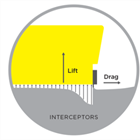
Number of views (2235) / Comments (0)
Related articles
Side-power or sleipner, what is the difference, vector fin (curved) stabilizers vs. straight fin stabilizers—which is better, stabilization on commercial vessels, please login or register to post comments., related articles.

What Types of Boats are Best for Vector Fin Stabilizers
Ever wondered if your boat is a good candidate for fin stabilizers? The experts at Imtra go through the best types of boats for Sleipner Vector Fins stabilization system.

Explaining the key differences between curved-fin and straight-fin stabilizers for yachts.
- RSS Expand/Collapse Troubleshooting & Maintenance (8)
- RSS Expand/Collapse Trim Control- Zipwake (5)
- RSS Expand/Collapse Thrusters (18)
- RSS Expand/Collapse Lighting (18)
- RSS Expand/Collapse Windlass & Anchoring (9)
- RSS Expand/Collapse Stabilizers (5)
- RSS Expand/Collapse Commercial Products (19)
- RSS Expand/Collapse Marine Wipers (5)
- RSS Expand/Collapse Imtra Product Spotlight (24)
- RSS Expand/Collapse Overland Van/RV (4)
Featured Articles
Latest news.

Better Sailing
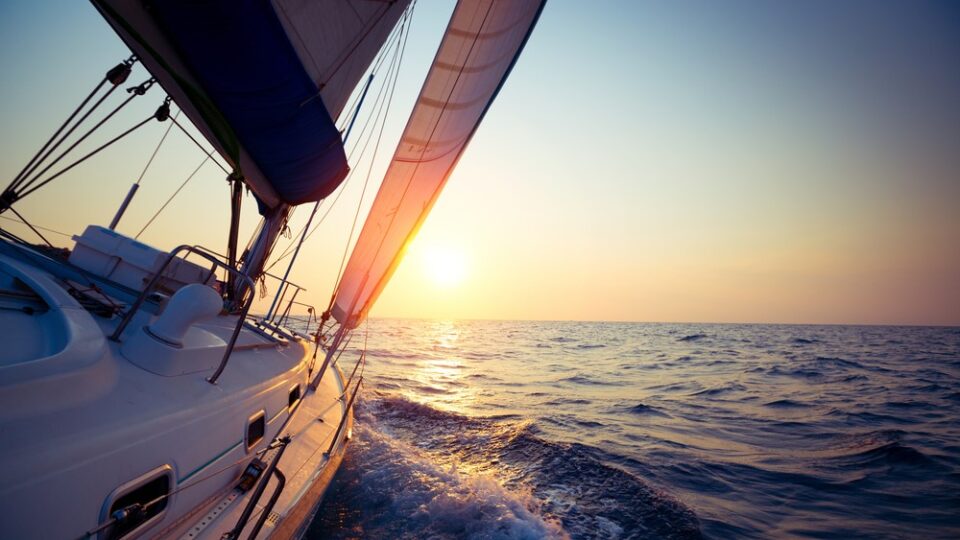
Bilge Keel Vs Fin Keel: Which is Better?
Keel design is constantly changing, and nowhere is this more evident than in current racing yachts. To stay upright when sailing upwind, these speedy offshore monohulls feature very sophisticated canting keels. The boats are made to be as light as possible while remaining strong enough to compete in ocean races. While cruising yachts aren’t built to compete in ocean races, there are a variety of keel designs to choose from. Traditional boats have long, deep keels that are an inherent component of the hull, making them heavier than modern designs but also more stable and seaworthy. Fin-shaped keels, which are bolted beneath the hull, are found on many modern boats. This results in yachts that are lighter, faster, and more maneuverable than deep keel designs. In this article, I will compare the bilge keel vs the fin keel types. So, if you’re interested to learn more, then keep reading!
So, what do we mean by fin keel? This is the boat’s major structural component. It is also known as the vessel’s backbone, as it runs longitudinally across the hull from bottom to top. The keel is built of robust material and runs from the stem to the stern to ensure the boat’s stability. It is usually made of metal or wood. A fin keel is a long, weighted blade that is affixed to the hull’s bottom. It is more agile, lighter, and faster than a full keel, but it is also more vulnerable. A lever is created by the increased distance between ballast and sails, which eliminates the need for a big wetted surface or additional ballast. Popular sailboats with a fin keel include the Hunter 34, the Bavaria 40, and the Catalina 30.
Fin keels are bolted to the hull and are deeper and thinner than full keels. They’re also less heavy. This significantly improves performance, making fin keels much faster in all scenarios. Fin keels, on the other hand, have a number of significant drawbacks. Fin keels are less comfortable than full keels because they allow for more heel and a less stable track. Thus, this results in less directional stability. Fin keels are also much more vulnerable than full keels, which means that when they run aground, they can break off or be damaged. Keep in mind that fin keels are greatly used by racers because they maneuver better in tight spots.
There’s another distinction on fin keels; fin keels with skeg rudder and fin keels with spade rudder. A small structural element in front of the skeg rudder protects fin keels with skeg rudders. This design is largely integrated into the hull, making it less vulnerable and providing a wonderful balance of speed and safety. The rudder on fin keels with a spade rudder is entirely exposed, and the fin is normally bolted on. Because the keel isn’t integrated into the hull, it’s more susceptible to damage and uncomfortable.

Pros and Cons of Fin Keels
A fin keel with a spade rudder is a common option nowadays. It is usually combined with light but beamy hulls with a high freeboard. Excellent speed, high pointing, and quick tacking are all benefits of a low wetted surface and a good aerofoil design. Steering is also lighter. Also, the best designs of a fin keel with a spade rudder are capable of cutting through strong seas with moderate comfort. Note that when sailing downwind, a fin keel with a spade rudder is fast, quick to surf, and might even be able to plane.
The disadvantages of a fin keel with a spade rudder are that it requires earlier reefing and it is less steady on the helm. Another disadvantage that applies when sailing downwind is that it can broach suddenly and easily and hard to control in rough conditions. Also, slamming can be caused by flat sections and in rough weather lightweight designs can be uncomfortable. They also have a strong tendency to round up when hard pressed. Moreover, when sailing downwind, this type of keel can be unstable and hard to control in rough weather conditions.
A fin keel with a skeg rudder has some minor differences to the latter type. Note that the skeg running aft protects the rudder and facilitates tracking both under sail and power. Generally, a fin keel with a skeg rudder offers better support for the rudder. There’s also less chance of damage than with a fin keel with a spade rudder. On the contrary, there’s a more wetted surface thus it makes it slower. Also, as a result of limited balancing, this can make the helm heavier.
But, what are the benefits of a well-designed single keelboat over a double keel model, then? Because it is difficult to create a twin keelboat with a truly deep draught, a moderate draught twin keel vessel may outperform a sister boat with a single keel of the same draught, the deep keel variant will always be faster. Furthermore, compared to a twin keel model, a boat with a deep single keel will have less wetted surface area and hence less drag. This is especially important in light weather when the twin keel is at a disadvantage.
Fin Keels Properties
The keel was once employed to keep the ribs together as well as to keep the stem and sternpost in place. As you may know, there are several types of keel. The most common ones include the full keel or ballast keel which is used for stability and lateral resistance. Also, the drop of sliding keel is used to prevent the boat from side slipping. In addition, the bilge keel is a common shoal-draught option and the fin keel is generally faster and lighter.
So, the fin keel is a narrow plate in the middle of the ship, situated to the keel of a boat. It is made of wood or metal and extends downwards. A fin keel’s main purpose is to produce lateral resistance and make the boat more stable. Moreover, when a boat has a fin keel, it is easier to steer. This keel is usually nearly half the length of the boat’s bottom, and it aids in reducing drag and creating less leeway. As a result, the boat may travel quicker while remaining more stable in relation to its weight.
Note that fin keels are even more efficient when paired with current sail design and materials. The fin keel is now a separate rudder, such as a skeg hung or spade, and it is the most prevalent type of keel. As aforementioned, fin keels have various drawbacks, such as poorer directional stability, for some. They’re also more difficult to design and support when it comes to hard grounding. An excellent component to compare boats on is the fin keel. When looking at boats and their characteristics on boat comparison databases you can find more information about a specific type. For instance, details about the size, material, and stability of the fin keel used on various boat models.
>>Also Read: Sailboat Keel Types
Bilge keels are planes or fins that fit externally at the bilge’s turn. Their length is normally around a third of the ship’s length. Sometimes they might be larger, but seldom surpass half of the ship’s length. Depending on the size and fullness, their depth ranges from 1 to 2 feet. If they are too shallow, their performance will be limited. Yet, if they are too deep, damage may occur while berthing alongside, drydocking, or running aground.
A bilge keel is basically a double keel with double fins that allow the boat to be beached and stand upright on its keel. Bilge keels provide twice the wetted surface, increasing comfort, and directional stability while lowering heel height. Due to improved design, modern bilge keels frequently give an adequate windward performance. When contrasted to the fin keel, the bilge keel sacrifices speed but does not necessarily give a lower overall performance. Examples of common sailboats with a bilge keel include Dufour Dynamique 62, Patagonia Patago 39, and Hunter Duette.
Bilge keels are the most common passive system, and they are installed on the vast majority of boats. They are basically plates that protrude from the bilge turn and span the middle half to two-thirds of the boat’s length. In general, they do not protrude beyond the boat’s side or keel lines so as to minimize damage. But, they must reach the boundary layer around the hull to be functional. In addition, they induce turbulence by producing a body of water to flow with the boat, dampening the motion and generating an increase in period and drop in amplitude.
Bilge keels are surprisingly common on many boats, both private and commercial because motorboats often lack stability, and this is an elegant, simple, and strong solution. The fins aren’t very wide, and they don’t protrude very far outwardly, so it’s a simple design to build and utilize. On sailboats, though, things are a little different. Because the bilge keel’s purpose is not only that of a stabilizing device, but also that of a keel, they tend to be longer, resulting in the appearance of legs of sorts.
The primary function of a bilge keel on most ships is to help dampen the rolling motion of the vessel. Other minor benefits of the bilge keel include bilge protection during grounding and greater longitudinal strength at the bilge. The bilge keel’s dampening function is tiny but effective, and it comes at no expense after boat construction. It is carefully positioned on the ship to avoid excessive drag when underway. Moreover, alternative positions of the bilge keel may be tried on the model so as to anticipate power requirements in order to obtain a minimum drag.
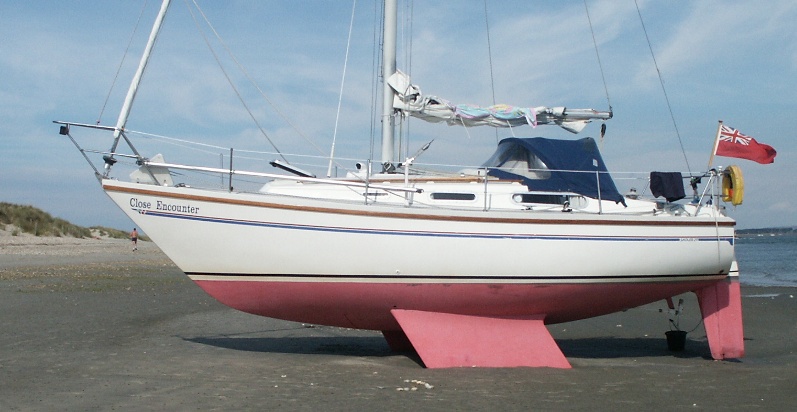
Pros and Cons of Bilge Keels
Bilge keels have a number of distinct benefits over full and fin keels. The fact that the boat can be beached is the most essential feature, making it a popular design in tidal areas. The use of bilge keels is particularly popular along the British coast, where fishermen keep their boats in tidal ports. Another significant benefit is that the boat may be stored on its keels, which makes dry storage and maintenance much easier.
Bilge keels are more effective for high angles of roll than for small angles of roll. Also, the reduction in rolling motion is larger for a boat moving forward than for a stationary boat. The roll energy of the ship is passed to the water particles in the region of the ship’s hull, making them passive stabilizers. Keep in mind that the installation of bilge keels is not suitable for all ships. An icebreaker, for example, requires clean hull contours so that boat will be able to steer onto the ice and collapse it.
The bilge keels have huge levers around the rolling axis, and the forces on them provide a large moment opposing the rolling, despite their size. They have the ability to reduce roll amplitude by more than a third. Their impact is often amplified by forwarding speed. Note that in still water, they are aligned with the flow of water past the hull in order to reduce drag. When the ship is rolling, the drag increases, causing the ship to slow down slightly.
Bear in mind that a sailboat with bilge keels can stand upright on flat terrain due to their length and the fact that they extend beyond the lowest point of the hull. The advantage is undeniable in this case. The ability of a boat to stand upright while aground greatly expands your options. If you prefer to spend the night on the shore, your boat can stand flat. Many keelless boats, or those with retractable keels, take advantage of this feature as well. It’s also something that makes life a lot easier for sailors, especially in low-tide locations.
So, the major advantages of bilge keels include a shallow draught and great protection when grounding. In addition, a bilge keel can dry out on a flat bottom and some designs are also able to perform better windward than long keels; similar to fin keels. On the other hand, the disadvantages of bilge keels include less speed and pointing when sailing windward. Also, when the boat is well-heeled it is possible that waves might slap under the windward keel. Lastly, it can topple over in case one keel encounters a soft ground or a hole.
Bilge Keel Properties
Keep in mind that bilge keels are a broad term that encompasses a wide range of design modifications. Bilge keels are, strictly speaking, additional to a long central keel installed near the bilge. In this case, the hull turns from the bottom to the side of the boat. These were traditionally non-structural, shallow, and lengthy, with the goal of reducing rolling. Twin keels, on the other hand, completely replace the central keel and are structurally modified to make them the principal ballast-bearing hull appendages.
There were some early twin keel designs that simply placed two shallow-draught keels on either side of the centreline. Meaning that they were situated at right angles to the waterline and parallel to the centreline. However, these boats used to sag to leeward when sailing upwind and lacked sufficient hull reinforcing at the attachment spots. So, modern keels were developed and they are now more hydrodynamically aligned. In addition, some say that they give at least as much lateral resistance as a single keel, but with more drag in theory.
Because of the additional reinforcement needed to handle loads of the ballast and drying out, a boat with two keels will be heavier. Subsequently, it will have a higher center of gravity due to the reduced draught. Modern construction, narrow-chord keels, and ballast bulbs, among other things, help to mitigate these issues.
Bilge keelboats are usually regarded to provide the advantages of short draught and the ability to dry out upright in low water at the sacrifice of performance. However, that is not the full picture. In other words, a well-designed twin-keel boat may perform better on average than some single-keel boats. It must be stated, however, that many of the early bilge keel designs were ineffective. These had very shallow keels with little to no aerofoil shaping and were attached to the boat vertically. It’s no surprise that these boats didn’t sail well, especially windward, despite having high directional stability, which has long been a desirable feature in cruising boats.
>>Also Read: Full Keel Vs Fin Keel On Sailboats
Bilge Keel VS Fin Keel – The Bottom Line
The comparison between bilge and fin keels can be a contentious subject. While it may appear that fin keels are preferred by the majority of new boat buyers, there is a sizable undercurrent of sailors who prefer boats that can take the ground. While fin keels theoretically give a deeper center of gravity, marginally less drag, and greater lateral resistance, making them better at sailing to windward, they are a recent development, and it wasn’t long ago that all sailboats were long-keeled and could dry out on legs or alongside a harbor wall. If you want a stable boat and the ability to beach your boat and don’t really care about performance then go for a bilge keel. If you opt for speed and agility go for a fin keel boat but note that these tend to be more vulnerable to damage.
I hope that this article will help you make the right decision. Good luck with your research!
Peter is the editor of Better Sailing. He has sailed for countless hours and has maintained his own boats and sailboats for years. After years of trial and error, he decided to start this website to share the knowledge.
Related Posts

Sailing with Friends: Tie Knots, Navigate the Seas and Create Unforgettable Memories

Atlantic vs Pacific: Which is More Dangerous for Sailing?

The Ultimate Guide to Choosing the Best Fishing Line for Trolling

Lagoon Catamaran Review: Are Lagoon Catamarans Good?
- Buyer's Guide
- Destinations
- Maintenance
- Sailing Info
Hit enter to search or ESC to close.

Boat Keels & Fins: 7 Types Explained (For Beginners)
A keel is basically a structural component of a boat or ship which looks like a fin that extends at the bottom of a boat on the center-line.
A keel of the boat is usually the first component that is constructed while building a boat. The main purpose of a keel is to offer both strength and balance to a ship or boat while it is in the water.
These keels are available in different designs, as explained below:
Table of Contents
7 Types of Boat Keels Explained

Keels may be found in six varying designs, giving rise to six keel types.
They include:
- Bilge keels
- Centerboard keels
- Canting keels
1) Full Keels
This particular keel by design covers at least half of the boat´s length.
It contains a forward edge that bends upwards, while its aft edge usually links to a rudder. This type of keel has a key advantage of providing directional stability as well as relatively safe and strong grounding of the boat or ship.
When referring to safe grounding, the full keel is safer if the boat gets to lie on hardened ground.
The full keel offers a stable and strong balancing surface for the hull whether the boat is along the coast or while traveling.
A boat or ship which is made with a full keel rides smoothly while traveling in the water, providing great directional stability. For instance, if the full keelboat is well balanced, it enables a boat to stay in the compass direction with the keel keeping the boat in a steady direction.
A full keel design is the traditional style of older wooden boats and many newer boats. It has many years of experience that provides a comfortable and safe boat.
2) Fin Keels
This type of keel has a length that is less than half of the hull length. It is designed with a flat shape that is sharp-pointed at its trailing edge and resembles a shark’s fin. This type of keel is very fast , it contains less wetted surface as compared to full keels, and it also has a deeper draft than the others.
Often, the deeper the fin keel´s draft is, the better it makes a ship or boat sail.
When it comes to speed and racing, as well as performance, the fin keel is unbeatable.
3) Bulb Keels
This particular keel is often referred to as a shoal draft fin keel. Typically, a deep fin keel is made shorter and then connected with a torpedo-like bulb made from lead material at the bottom of the keel.
It is specially designed to be shallow to allow sailing or cruising within the Bahamas or the Chesapeake Bay as well as other areas with shoal water depths.
However, this design does not significantly compromise the boat´s performance since they have been used on older racing sailboats.
If you are planning to sail over shoal waters, a bulb keel may be appropriate. Sometimes, they are not as shallow as other special full keelboats, however.
4) Wing Keels
The Wing Keel may be used as an alternative when sailing in shoal waters.
This does not use one bulb at the bottom of the keel; instead, it makes use of two plates that are attached laterally at the bottom of the fin keel.
This type is considered by some to be better when it comes to performance as compared to bulb keels since it minimizes tip vortex turbulence while sailing. Its draft is usually less.
Additionally, since the two sides are designed in a manner that they offset each other, as the boat heels while sailing, the lateral resistance is not reduced as much as with straight or bulb keels.
However, this type of keel is hard to free in case the boat gets stuck into the muck. Their wings usually go deep and grip onto the bottom of the ground, making it difficult to release once it gets stuck.
Some of the advantages of a wing keel include:
- Minimized draught
- deeper center of gravity, which implies they have better righting moments
- re-engineered water flow above the keel foot implying that they have high efficiency and results in better sailing characteristics.
On the other hand, its disadvantages include:
- It can be more difficult to free if the boat goes aground
- this type of keel is likely to collect objects such as lobster pots as it sails
- and weed may grow at the bottom of the wings, which can become hard to remove.
5) Bilge Keels
These double bilge keel makes a boat stay upright in case of a dried out low tide.
This design results in a shallower draught as compared to fin keels. This feature makes it appropriate for sailing in shallow waters along the coastlines.
However, this type of keel does not perform as well as a single keel and is therefore used for sailing instead of racing.
6) Centerboard Keels
This is yet another alternative that may be used in shoal waters.
The centerboard keel contains a base keel, which has an internal centerboard that rotates downward to create a deeper keel when sailing.
If the waters are deep, the sailor gets better performance with the centerboard down. If you are sailing in shoal waters, you should sail with the centerboard upwards.
This feature is important as it helps to provide the boat with a performance similar to a deep keel and yet to offer improved maneuverability in shoal waters.
However, the main disadvantage of the Centerboard keel is maintenance. It is difficult and problematic when it develops mechanical issues.
7) Canting Keels
This type of keel is the most unique when it comes to performance.
It is connected onto a special (strong) hinge, and as the boat or ship heels, the crew uses hydraulics to move the keel in the windward direction.
This process of moving the keel in a different direction from your heading direction makes it possible to maximize the lateral force and the righting force, to sail faster.
The main challenging posed by this keel is maintenance due to the complex design of the canting keel. It is usually only found in specialized racing boats.
It has a promising future when it comes to racing, but it is not recommended too often because of its complicated operations.
Common Problems With Boat Keel and Fins
First, fins and keels are not protected from potential external impacts. By their design, they are long components with lever-like arms.
Therefore, if an underwater object was to be hit, like a sunken piece of log or even the sea bed, the force that would result is likely to be multiplied before being re-transmitted onto the entire boat over the keel area.
Therefore, the small surface is likely to encounter excess loads, which may result in cracks.
For instance, on the Chesapeake Bay, the majority of the creeks range from 4.5 -5 feet downwards. Boats and small ships that attempt to get too close to shore may often get grounded at some point. The moment grounding happens, the force which results and exerts pressure onto the keel is strong enough to generate cracks on the keel or along the hull.
The cracks are only physical indications of the damage caused.
For instance, the bolts which are connecting the keel and the hull at the bottom of the bilge may be frequently wet, resulting in bolts rusting and getting corroded.
When this happens, the forces together with rusted bolts will result in the keel falling off. This is dangerous and can cause severe accidents.
When the keel is removed or damaged, and the keel bolts develop holes, it allows water to flow into the hull. If the holes remain in that condition for a while, this may cause the boat to sink as a result of the incoming water.
Also, when the keel has been compromised in some way, the ballast or righting weight, which helps to counter the sails, is eliminated. In this case, if strong wind heels over your boat, it may result in the boat capsizing!
To make it worse, after the ship has capsized, you will not be able to right it since the ballast will not be there. Therefore, when a keel is destroyed, it makes the sailing horrible!
Finally, if you want to sail a boat with a fin and keel, it is recommended to avoid sailing through shallow waters. In case your boat gets grounded, the underwater appendages may be destroyed, and repairing such elements is very expensive and time-consuming.
You should take a fin keelboat or ship as a deep water machine! In deep waters, it glides over and through the water waves efficiently and easily.
Click to share...
- Leisure boat homepage
- Thruster See all Thruster Thruster See all
- Bow- and stern thruster See all Bow- and stern thruster Bow- and stern thruster See all
- Tunnel thrusters
- External thrusters
- Retract thrusters
- Control units See all Control units Control units See all
- Remote control
- Control panel
- Thruster upgrades See all Thruster upgrades Thruster upgrades See all
- Upgrade to E-series
- Intelligent Power Control
- Variable Speed Control
- Joystick integrations
- Installation parts See all Installation parts Installation parts See all
- Tunnels for bow installation
- Tunnels for stern installation
- Isolation kits
- Electrical accessories See all Electrical accessories Electrical accessories See all
- Power Cables
- Signal Cables
- External installation
- Retract Parts
- Spare parts See all Spare parts Spare parts See all
- Download Side-Power spare parts list
- Brushes and springs
- Drive pins and shear pins
- Electrical components
- Fastening components
- Gearlegs and brackets
- Hydraulic components
- Sealing components
- Flexible couplings
- Stabilizer See all Stabilizer Stabilizer See all
- Vector Fins™
- Control panels
- Power packs
- Accessories
- Spare parts
- Steering See all Steering Steering See all
- Rudder arms
- Power steering
- Installation
- Anchor windlass See all Anchor windlass Anchor windlass See all
- Remote controls
- Anchor lines
- Installation See all Installation Installation See all
- Signal cables
- Thru-hull fittings
- Anchor rollers
- Find a dealer
- Professional boat homepage
- Thruster system See all Thruster system Thruster system See all
- Thrusters See all Thrusters Thrusters See all
- Power cables
- Accessories for external
- Accessories for retract
- Stabilizer system See all Stabilizer system Stabilizer system See all
- Steering system See all Steering system Steering system See all
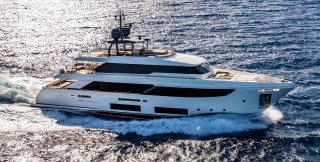
- What are yacht stabilizers and how do they work?
Marine stabilizer systems have been around for a long time, but are typically known for being used on larger passenger ships and superyachts. However, with the dramatically increased comfort and usability stabilizers add to any boat, it has also left owners of small leisure vessels wanting these systems.
What can stabilizers do for me, and why do I need them?
First of all, while most products available of various technologies and levels of efficiency are called stabilizers, the term itself is perhaps a bit misleading. What stabilizers do, is reduce roll movement of a vessel, but not very much of the pitch, sway, yaw, or massive movements you get on a vessel in waves. Luckily, in most situations, the roll is by far the most dominant and most uncomfortable motion, so reducing roll by a good percentage will make a substantial difference in comfort and safety on board.
When installing a high performing stabilization system onboard, you benefit from:
- More use of the boat as you can go out in more weather conditions.
- People that easily get seasick can now enjoy boating.
- Less wear and tear, as you don't have to always head into, or away from larger waves to avoid uncomfortable rolling motion.
- Reduced risk of accidents caused by unexpected boat roll.
- Increased crew awareness by less fatigue and discomfort.
With stabilizers you also benefit from reduced fuel consumption overall
While adding fins (or other stabiliser types), most systems will increase the fuel consumption a little at the same speed, fins by direct drag in the water, and gyros by adding weight. However, our claim is that the overall fuel consumption will be reduced because, with stabilizers, you can take the direct route to where you wish to go, even in rough conditions. You can also choose a more fuel-efficient speed, with the waves from the side, while still being comfortable (modern cruisers have less roll at higher speeds, thereby people often drive them hard to avoid the rolling). This is a generic statement for all fin stabiliser systems, with Vector fins™ this improves even further.
Stabilizers increase your boat's secondhand value
Surely, the boat will be a lot more attractive on the used boat market, boasting a system that allows people who might be prone to seasickness to reconsider their ability to enjoy the sea and thereby adding a whole new range of potential buyers.

- Knowledge hub
672 Wine Club
- Motorcycles
- Car of the Month
- Destinations
- Men’s Fashion
- Watch Collector
- Art & Collectibles
- Vacation Homes
- Celebrity Homes
- New Construction
- Home Design
- Electronics
- Fine Dining
- Benchmark Wines
- Brian Fox Art
- Disneyland Resort
- Gateway Bronco
- Royal Salute
- Sports & Leisure
- Health & Wellness
- Best of the Best
- The Ultimate Gift Guide
Want to See America’s Cup Racing Up Close? These 9 Yacht Charters Let You Watch From the Water
Options range from 200-foot-plus superyachts with side trips to ibiza to intimate sailing vessels catered by michelin-starred chefs. let the races begin., jemima sissons, jemima sissons's most recent stories.
- Beloved Italian Perfumer Santa Maria Novella Just Dropped Its First Eau de Parfum in 800 Years
- How This French Ski Parka Became a Downtown Darling of the Finance Set
- New Luxury Cruise Liners Will Be Powered by Giant Solid Sails
- Share This Article

Next week, when the 37 th Louis Vuitton America’s Cup kicks off in Barcelona with its opening ceremony, the contest that began in 1851 with a race around the Isle of Wight between the fastest British and American sloops (the yacht America won handily) will come back to Europe for the first time in 14 years.
The move to the Catalan capital from the 2021 event in New Zealand will make it more accessible to sailing fans in Europe, and even North Americans who want to view the fast, technical AC75 foiling boats in person. Barcelona has been preparing itself for a surge of spectators for the “return” of the Cup, which was held twice in Valencia, Spain, in the aughts.
The America’s Cup may be billed as “the race with no second place,” but it takes three months of racing and four events for one of five Challenger teams to win the Louis Vuitton Cup, and that winner will race Defender Emirates Team New Zealand in the America’s Cup final. The racing runs from August through October, and this year includes a first-time all-women’s America’s Cup as well as an event for the world’s best youth sailors.
Having Barcelona as a venue was a smart move, partly for the gorgeous beaches fronting the race course on the Med. But there is also the city’s magnificent architecture and sense of history as well as vibrant arts, culture and, of course, no shortage of Michelin-starred restaurants.
There are many five-star hotels in the area, but the smartest and most thrilling way to see racing is by water. The vessel options are wide-ranging—from weeklong superyacht charters to luxury suites on a cruise ships to day trips on sailboats with Michelin-starred cuisine. Many can be combined with on-land stays and even cruises to other parts of Spain as part of the itineraries.
One important note: Four zones adjoining the race course allow spectator boats. Before chartering a vessel, be sure to find out which zone the boat will operate in, because that impacts how close you are to the racing.
Here are 9 options to suit the most avid Cup aficionados or those visiting Barcelona who want to sip champagne and watch the AC75 foiling boats battle it out.
Superyacht ‘Resilience’

Edmiston is offering charters aboard the 212-foot Resilience during the America’s Cup. The ISA-built superyacht, designed by Enrico Gobbi, features a mosaic-tiled pool, circular fire pit and a BBQ for a ringside lunch. Post-race pampering comes via the steam room, sundeck jacuzzi and gym, and there’s even a self-playing Edelweiss piano and projector for evening entertainment. The vessel sleeps 12 across seven cabins. From September 16, weekly charters start at about $645,000 (€600,000).
Explora Journeys

The soon-to-be-launched Explora II looks very much like its sistership, the Explora I : onyx finishes, self-playing Steinways, on-deck Technogym bikes, a spa with a Himalayan salt room, Dunhill cigar den and a wine cellar boasting decades-old Chateau Latour. With 461 luxury suites, how was the Explora II chosen to become an America’s Cup viewing platform? The idea came from the top down.
“I love sailing and believe the Med is the most beautiful sea on earth,” Pierfrancesco Vago, executive chairman of the cruise division of MSC Group, told Robb Report during a visit aboard Explora I in Barcelona. “We thought if only our customers could also experience [the America’s Cup], we can call it the ocean state of mind.”
Explora II launches in mid-September, with itineraries planned to coincide with the different Cup events. On October 6, the vessel will be in port for the Louis Vuitton Cup Final and Puig Women’s Races. Guests can take a walk to the official race village and experience its excitement before watching the races from their suites. A 10-night journey starts from $5,210 per guest.
The Almanac Sailing Experience

Barcelona’s Almanac hotel has a romantic-gastronomic experience that offers guests front-row seats on a Jeanneau Sun Odyssey 45 sailboat with a capacity for 10 guests. Besides the racing, the package includes two nights at the hotel. The boat comes with the hotel’s branded slippers and Jimmy Boyd bespoke amenities. Enjoy a selection of customized Cava Bellinis from the pop-up bar. Chefs from the hotels’ restaurant will also serve up shrimp salad and fennel ceviche paired with organic Spanish wines. The boat can be chartered every Saturday from August 31 to October 26. The Louis Vuitton Cup round-robin starts on August 29 and lasts through Sept. 8. There’s also the Puig Women’s Race (first all-female America’s Cup in its 171-year history) and, of course, the America’s Cup finals in October. Prices start at $2,940 per couple.
Superyacht ‘C’

For a majestic week-long cruise that incorporates America’s Cup summer races and possible side itineraries in Costa Dorada, Sitges and Formentera, Camper & Nicholsons’ expansive 177-ft C is the flashy option, defined by Minotti furniture, lacquered panels and a hamman. It also sleeps 12 in six cabins that feature a master and two VIP suites. Its chase boat also offers a great opportunity for side trips. Weekly charters from Sept. 18-October 31 run from about $513,000 or €400,000.
Sailing Yacht ‘Imagine’

UK adventure specialists Pelorus offer a private seat on an elegant sailing boat seeped in America’s Cup history. Built in New Zealand by Alloy Yachts, Imagine is a 110-footer that served as an official viewing platform for the America’s Cup in Auckland, but it has also completed three global circumnavigations. Beyond its sailing chops, it’s a beautiful vessel, with a blonde, teak-lined deck, large salon and dining area, and three cabins for sleeping seven guests. It will be available from October 12 for the America’s Cup final. Pelorus is also offering to bookend the week with trips to Majorca and Ibiza. About $101,000 (£79,121)
Superyacht ‘Diane’

Also available from Edmiston, the 141-ft Diane can accommodate 10 guests in five staterooms for the week. The interior is all about soft hues, featuring cream leather and white marble, boasting a bar and plenty of outdoor seating for watching the races. For the non-race legs, guests can take to the water via the large beach club, complete with seabobs and wakeboards. It has a Balearics license, making a hop to Ibiza or Majorca a possibility. Weekly charter rates from September 23 run about $150,000 per week (€140,000)
Black Tomato Cup Package

Incorporating a city-stay, Black Tomato’s America’s Cup getaway includes a day’s private day charter to view the race, plus five nights at the Mandarin Oriental as well as visiting the regatta course and different bases of the America’s Cup teams for an insider’s look at the operations and technology. As a dayboat, its Bali Yacht Saxador 400 GTO can accommodate 11 guests. It sets sail from Port Olympic, giving guests a sweeping view of the city on one side and the regatta course on the other. The boat has access to the blue area (for preferred charter boats) on the front line. From $12,750 per person, based on two people.
Superyacht ‘Quasar’

Camper & Nicholsons recently introduced the 153-foot Quasar to the charter market and what a great way to end the Med season than by viewing the America’s Cup. It has six cabins (including two master suites) that can accommodate 12 guests, along excellent outdoor seating, an upper salon that joins the aft deck area for viewing the races or dining al-fresco. The beach club has a large selection of water toys. Visits to scenic Med ports around Barcelona are also possible on the week’s charter, which start at about $232,000 (€210,000).
Superyacht ‘Kiawah’

For front row seats on day charters in the blue zone (the third-closest area to the races), official charter partner ac37 Sailcharters offers different types of vessels and packages. The 110-foot Kiawah features a cocktail lunch on board, a specialized lecture from an expert sailor, and an AV system to follow the race in real time. From August 22 through October 11, daily rates are about $34,000 (€30,800) and during the America’s Cup finals October 12-27, rates move to about $41,000 (€37,400).
Read More On:
- America's Cup
- Louis Vuitton
More Marine

This New 116-Foot Pocket Explorer Will Make Larger Expedition Yachts Jealous

Meet Zephyr, a Giant 378-Foot Megayacht With Not One But Two Pools

This Gigantic 814-Foot Cruise Ship Will Double as a Floating Hotel During the Monaco Grand Prix

Forget Boring White. This New 123-Foot Superyacht Comes in a Sleek Custom Silver.

Meet the Wine Club That Thinks Differently.
Receive editor-curated reds from boutique California producers four times a year.
Give the Gift of Luxury
Latest Galleries in Marine

11 Fascinating Facts About Tankoa’s Library-Quiet 169-Foot Project Secret

Bee Explorer Yacht in Photos
More from our brands, zoë kravitz embraces lace in saint laurent set and channing tatum suits up in the row for ‘blink twice’ london photocall, ncaa fires back at objectors, defends house settlement, st. vincent’s ‘all born screaming’ tour further certifies her as rock’s dark (but oddly cheerful) queen: concert review, over 100 firefighters are tackling a blaze on somerset house’s roof in london, the best yoga mats for any practice, according to instructors.
- Israel-Gaza War
- War in Ukraine
- US Election
- US & Canada
- UK Politics
- N. Ireland Politics
- Scotland Politics
- Wales Politics
- Latin America
- Middle East
- In Pictures
- Executive Lounge
- Technology of Business
- Women at the Helm
- Future of Business
- Science & Health
- Artificial Intelligence
- AI v the Mind
- Film & TV
- Art & Design
- Entertainment News
- Destinations
- Australia and Pacific
- Caribbean & Bermuda
- Central America
- North America
- South America
- World’s Table
- Culture & Experiences
- The SpeciaList
- Natural Wonders
- Weather & Science
- Climate Solutions
- Sustainable Business
- Green Living
Protests across Venezuela as election dispute goes on

Opposition supporters have gathered across Venezuela to protest against Nicolas Maduro's disputed victory in last month's presidential election.
Opposition leader María Corina Machado joined thousands of protesters in the capital, Caracas, and urged them not to be afraid.
Ms Machado, who had been in hiding after being accused of insurrection, said there was nothing above the voice of the people, and that the people had spoken.
Police and the army were deployed in force as supporters of Mr Maduro also held a demonstration.
"We won't leave the streets," Ms Machado told protesters, with many of them waving copies of election records from their voting stations as proof of victory.
Ms Machado, who was banned from running in the election, had called for nationwide protests to intensify pressure on Mr Maduro to concede.
Some demonstrators seemed determined to carry on.
"This is a criminal government that wants to hold on to power. I smell freedom, I have nothing to fear," said Adriana Calzadilla, quoted by AFP news agency.
“I hope for Maduro to recognise his defeat and hand over the power peacefully," medical student Jose Berbin told Reuters.
"What I think will happen is that the dictatorship will get harder, we all need to unite against the dictatorship and show that good people are more.”
Mr Maduro has insisted he won a third six-year term, but the opposition released tallies it said showed its candidate, Edmundo Gonzalez, winning by a wide margin.
Speaking from an unidentified location, Mr Gonzalez said it was time for an "orderly transition".
At his rival rally, Mr Maduro mocked Mr Gonzalez, saying he was "living in a cave".
The electoral commission, controlled by allies of Mr Maduro, has refused to release detailed results, but declared he won with 52% of the vote. Independent observers said it lacked transparency.

Since the election, anti-government protests have flared up and hundreds of people have been arrested by the security forces, which remain loyal to President Maduro.
According to the Venezuelan government, more than 2,400 people have been detained since 29 July, the day the disputed election result was announced.
The UN denounced the fact that street protests and criticism on social media have been met with "fierce repression" by the state .
Similar demonstrations have been held in cities around the world, from Australia to Spain and also in the United Kingdom, Canada, Colombia, Mexico and Argentina.
The European Union, the United States and a number of Latin American nations have refused to recognise the result.
BBC OS Conversations: Life in Venezuela
Un slams venezuela repression and lack of transparency, venezuela opposition urges global protest over poll result, venezuelan president bans x for 10 days over musk row.

- CREATE AN ACCOUNT
- Boat Cover Finder
- Bimini Top Finder
- Boat Propeller Finder
- Engine Parts Finder
- Anchor & Dock
- Watersports
- Clothing and Footwear
- Engine Parts
- Cabin and Galley
- Covers and Biminis
- Electronics
- Paint and Maintenance
- Pumps and Plumbing
- Anchor Chains & Ropes
- Boat Fenders
- Boat Mooring
- Boat Protection
- Dock Storage & Protection
- Ladders, Steps, & Platforms
- Top Sellers

- Fishing Rods
- Fishing Reels
- Fishing Rod & Reel Combos
- Fishing Tools & Tackle Boxes
- Fishing Line
- Fly Fishing
- Fishing Bait & Fishing Lures
- Fishing Rod Holders & Storage Racks
- Fish Finders, Sounders & Sonar
- Trolling Motors
- Fishing Nets
- Fishing Downriggers & Acessories
- Fishing Outriggers & Acessories
- Fishing Kayaks
- Fish Cleaning Tables

- Inflatable Rafts
- Paddle Boarding
- Paddles & Oars
- Wakeboard, Wakesurf & Ski
- Wakeboard Towers
- Tow Ropes & Handles
- Life Jackets & PFDs
- Snow Sports
- Roof Racks, Carriers, Dollies

Men's Clothing
- Accessories
Men's Footwear
- Atheltic Shoes
- Water Shoes
Women's Clothing
- Dresses & Skirts
Women's Footwear
- Fuel Systems
- Sacrificial Anodes & Zincs
- Generator Parts
- Inflatable Boats
- Propeller Parts & Accessories
- Boat Manuals
- PWC Parts & Accessories

- Fishing Boat Seats
- Offshore Boat Seats
- Ski Boat Seats
- Pontoon Boat Seats & Furniture
- Boat Seat Pedestals & Hardware
- Boat Seats by Manufacturer
- Boat Tables & Hardware
- Boat Seat Covers
- Boat Seat Vinyl
- Floating Boat Cushions

- Barbeque Grills
- Boat Drink Holders
- Cabin Accessories & Hardware
- Boat Ventilation
- Interior & Cabin Lighting
- Marine Teak Products
- Carbon Monoxide & Smoke Detectors
- Binoculars & Telescopes

Boat Bimini Tops
- Bimini Top Accessories
- Pontoon Bimini Tops
- Other Biminis
- RV & Trailer Covers
- Boat Shrink Wrap & Accessories
- Boat Shelters
Boat Covers
- Boat Cover Accessories
- Boat Lift Canopy Covers
- Other Covers
- Boat Wiring & Cable
- Marine Batteries & Accessories
- Marine DC Power Plugs & Sockets
- Marine Electrical Meters
- Boat Lights
- Marine Electrical Panels & Circuit Breakers
- Power Packs & Jump Starters
- Marine Solar Power Accessories
- Marine Electrical Terminals
- Marine Fuse Blocks & Terminal Blocks
- Marine Switches
- Shore Power & AC Distribution

- Marine Audio & Video
- GPS Chartplotters & Accessories
- Electronic Navigation Charts & Software
- Digital Instruments
- Display Mounts
- VHF Radios & Communication
- Marine Radar
- Auto Pilot Systems
- Action Cameras

- Fiberglass & Epoxy Boat Repair
- Boat Paint & Varnish
- Marine Adhesives, Sealant, & Caulking
- Marine Engine Maintenance
- Boat Cleaners & Waxes
- Boat Cleaning Supplies

- Fresh Water Boat Systems
- Bilge Pumps
- Marine Plumbing Parts
- Wash Down Pumps
- Livewell Aerator Pumps & Live Bait Wells
- Toilet & Waste Pumps
- Marine Pump Replacement Parts

- Tires, Rims, & Hub Kits
- Boat Trailer Winches
- Boat Motor Supports & Transom Savers
- Boat Trailer Guides & Rollers
- Boat Trailer Fenders
- Boat Trailer Lights
- Boat Trailer Hardware
- Boat Trailer Jacks
- Boat Trailer Brakes & Axles
- Boat Trailer Tie Downs
- Couplers, Mounts, Hitches, & Locks

- Boat Deck Harware
- Marine Nuts, Bolts, & Screws
- Boat Handles, Pulls, & Rings
- Prop Nut Kits & Hardware
- Boat Cabin Hardware
- Marine Fasteners
- Boat Windshield Parts
- Boat Tubing & Rails
- Boat Mirrors
- Marine Tools & Tool Kits
- Boat Lettering

- Women's Clothing Deals
- Men's Clothing Deals
- Fishing Deals
- Anchor & Dock Deals
- Electrical Deals
- Electronics Deals
- Paint & Maintenance Deals
- Pumps & Plumbing Deals
- Boat Seats Deals
- Trailering Deals
- Camping & RV Deals
- Dealer Login

- Forums Login

- Search forums
- Engine Repair and Maintenance
- Non-Repair I/O and Inboards
- Thread starter BeeEl
- Start date May 15, 2014
- May 15, 2014
Hello, let me start by saying I have searched the forums first, but got no results. I probably am using the wrong terminology. Anyway, when I got my boat it had a busted lower unit. I have since replaced it and fixed various issues. Everything seems to be running fine now. the boat seems to "stand up" for a bit before it planes out. I have played with the trim, but the issue still remains. I still have the busted lower unit and noticed the previous owner had installed a hydra fin (or whatever it's called). I understand that these are supposed to greatly help this problem. Before I drill holes in my new lower unit, I wanted to ask you experts' opinion. Should I? I am just not sure if they are a good thing or if they just cause other problems or issues. Thank you in advance. BL
Vice Admiral
BeeEl said: I understand that these are supposed to greatly help this problem. Click to expand...
Re: Fin or no? when going from plowing to plane, have your trim all the way in, down. after your on plane, then trim out to max rpm w/o changing throttle position. the stress with a whale tail is put back onto the gimble housing to force the bow down. fm has the right idea. smart tabs or real trim tabs is the way to go. oh, i had a wale tale on my last boat, all it did for me was break off a piece of my anti cavitation plate when i hit something on the river.
Re: Fin or no? no manufacturer recommends intalling anything like that on a drive, they do more harm than good
BeeEl said: Hello, let me start by saying I have searched the forums first, but got no results. I probably am using the wrong terminology. Anyway, when I got my boat it had a busted lower unit. I have since replaced it and fixed various issues. Everything seems to be running fine now. the boat seems to "stand up" for a bit before it planes out. I have played with the trim, but the issue still remains. I still have the busted lower unit and noticed the previous owner had installed a hydra fin (or whatever it's called). I understand that these are supposed to greatly help this problem. Before I drill holes in my new lower unit, I wanted to ask you experts' opinion. Should I? I am just not sure if they are a good thing or if they just cause other problems or issues. Thank you in advance. BL Click to expand...
Re: Fin or no? I'm not sure what line it is on. I've never checked it, but I can. It sounds like the fin is not the way to go. Glad I asked. I can trim it down while plowing. That's easy enough. I'm not sure trim tabs are in the budget right now.
Re: Fin or no? Every boat is different, I have a plate on mine, and I think it helps. Like Alldodge says, take your boat out and see how it responds to the trim. Trim flat to start then as it comes on plane try to find an optimum. Once you know how your boat responds to trim you can decide if it needs more help.
BeeEl said: I'm not sure what line it is on. I've never checked it, but I can. It sounds like the fin is not the way to go. Glad I asked. I can trim it down while plowing. That's easy enough. I'm not sure trim tabs are in the budget right now. Click to expand...
Re: Fin or no? Remember everything affects the trim. Speed, wind, waves, number of people and where they sit, so you need to be constantly changing the trim for the best ride. Watch your tach, small trim changes will result in changes in engine RPM, look for a point of maximum RPM at a given throttle setting. I never look at my trim gauge, don't even know if it works, usually just trim up till it just starts to, porpoise then back off from there for the best ride and max RPM. if you are tubing or skiing try to get the weight up forward. Go have som fun.
Starcraft5834
Lieutenant commander.
Re: Fin or no? if your boat is plowing and taking to long to plane,, lots of possible reasons.. wrong prop for load. engine power, heavy soggy boat.. trim or whale tail help not going to fix that... make sure your engine's sound first, if so,, look for proper prop,, perhaps a 4 blade in optimal pitch...
Re: Fin or no? I'm a Doel fin fan! All the other fins seem too big, bulky, & funky. I've had good results on boats that needed them, some boats don't. They've worked for me on boats that struggle a bit to get on plane.
ouachitaman
- May 22, 2014
Just say no to fins. If you need more low end grunt, go down prop pitch sizes. Just check your rpm at wot.
Fleet Admiral
- May 31, 2014
The Doelfin is the best thing since sliced bread. They do all they claim and more. Get your prop optimized and then bolt one on and get the best of both worlds. If they were no good they wouldn't have been selling like hotcakes for 30+ years, and you wouldn't see one on every 3rd boat (at least in my neighborhood).
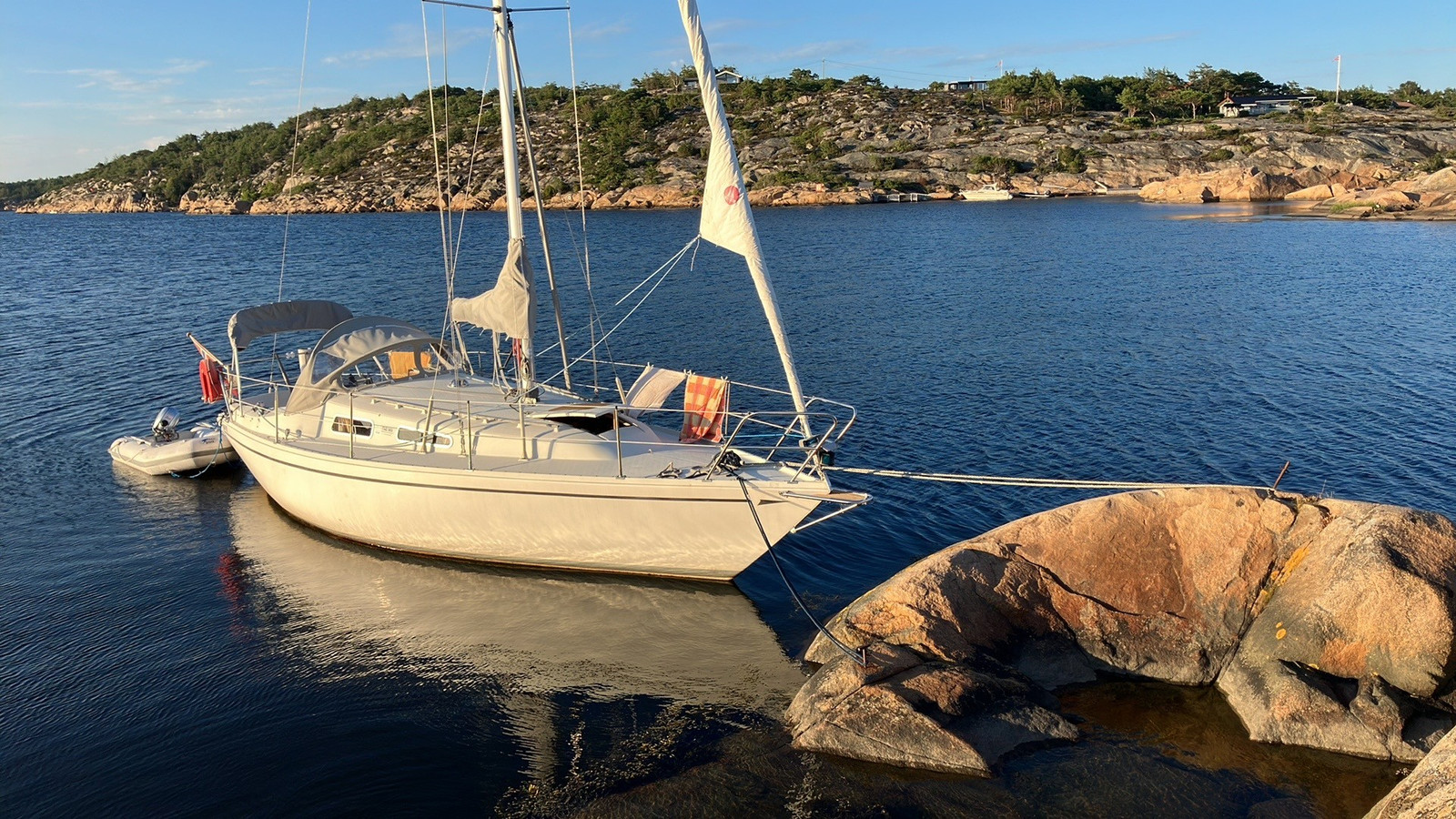
Pen, klassisk svensk turseiler - Perfekt førstegangsbåt!
Forsikre båten din
Sammenlign og se tilbud på forsikring
Pris på forsikring
Beskrivelse
Nydelig svensk klassiker med originalt teakinteriør i god stand. Fremstår veldig pen og godt tatt vare på, med blant annet originale putetrekk.
Perfekt båt for et par som elsker klassiske linjer og vil ha en lettseilt båt.
Det er med tungt hjerte vi nå selger, vi har hatt den i 4 år og hatt 3-4 uker på sjøen hver sommer pluss mange kortere turer.
Comfort 30 er en solid havseiler med gode seilegenskaper under alle forhold, tåler mye vind og sjø. Produsert i over 700 eksemplarer.
En stabil og sjødyktig seilbåt. En båt som har alt man trenger for å kose seg på tur. Båten er lett å seile og håndtere alene med alle skjøter og fall trukket til Cockpit.
Stort og romslig Cockpit-telt i god stand er uvurderlig og øker arealet og komforten under kortere og lengre turer i all slags vær. Hun er lett å seile og gjør enkelt 6 knop.
Soveplass for 2 i forpigg, soveplass for 2 i salong, soveplass for 1 i stikk-køye. Det er sengebunner i forpiggen. Dette hindrer kondens og øker søvnkvaliteten:-)
Vi har i vårt eie skiftet vanntank, startmotor, vannutskiller på diesellinjen, skroggjennomføringer, autopilot, batterier, lading fra landstrøm. Sydd om og skiftet vinduer i sprayhood, sydd om trekk til storseil i 2024. Montert baugspryd i 2024. Stående og løpende rigg ble sjekket sist 2021, og det ble byttet vindex og montert fall-leder til rulla. Rulleforstag og Genoa (140%) er fra 2019. Spribom og et eldre forseil medfølger.
Alt av fortøyningsutstyr inkl fendere og tauverk medfølger. Endel verktøy og reservedeler og velutstyrt pantry følger også med. Båten er klar for nye turer!
Det er bruceanker og ankorlina med 6 meter kjetting akter.
Båten er tett. Vi har tettet noen små lekkasjer fra rekkestøttene, strammet og tettet rundt hele sammenføyningen mellom skrog og dekk. Ingen lekkasjer fra luker eller vinduer.
Motoren går som en drøm og starter lett under skiftende forhold. Vi har hatt normalt vedlikehold hvert år, med skifte av olje og filtre og bytting av sink.
Selges for kr 99.000,-
Ring eller send melding for mer informasjon.
Reklamasjonsrett ved kjøp fra privatperson
Normalt gjelder 2 års reklamasjonsfrist mot skjulte feil og mangler. Reklamasjonsretten brukes hvis produktet er i dårligere stand enn det du hadde grunn til å forvente, basert på informasjon du har fått fra selger. Vær oppmerksom på at begge parter kan fraskrive seg reklamasjonsretten dersom dette er tydelig spesifisert i en kjøpekontrakt.
Les mer om reklamasjonsrett på FINNs hjelpesenter.
- Send melding
Vis mobilnummer
Kjøpekontrakt
- Ferdig utfylt kontrakt
- 1 måned båtforsikring til kr 0,-
- Digital signering
1721 Sarpsborg
Annonseinformasjon
| FINN-kode | 366092505 |
|---|---|
| Sist endret | 18. aug. 2024 00:26 |
Rapporter annonse
Annonsen kan være mangelfull. Fullstendig salgsinformasjon og opplysninger iht. opplysningsplikt kan fås direkte fra selger.
Velkommen til FINN.no
FINN.no trenger JavaScript for å virke. Vennligst slå på JavaScript i nettleseren og prøv igjen.
- Classifieds
- Remember Me Forgot Password?
- Boats Sailboats Discussion best fin/keel characteristics for IOM
| Page 1 of 2 | 1 |
| : : if all that doesn't confuse you I don't know what would | |
| has a trial version you can play with, it just will not print the output, but only display it on screen. I have the paid version and use it for dinghy foils, and IOMs too. NACA 0007, 2" chord, 7% thick 0% camber NACA 63x007, 2" chord 7% thick 0% camber NACA 64x007 2" chord 7% thick 0% camber | |
| . Reason: Spelling and add screen shots | |
| . | |
| For comparison, Selig S9033 7% | |
| There are many other free sofware out there to do the same kind of simulation, eg Xfoil and Javafoil. I guess we need to keep in mind these are just simulated data (drag, lift). I'll collect some 6-digit profiles and will have a try. I also mailed M. Selig, a university prof in aerodynamics-stuff, who is working in the low Reynolds field. I will keep you posted with all this if you have some interest. Remains I'd be curious to know if somebody already compared the different fins for their performance. I mean real-life testing. Cheerio, lesnicolas | |
| . Reason: typo | |
| | |
| Since a picture is worth... well, you know. Here is a sketch of what I'm trying to do. Head plug with plexiglass parting board, waxed and ready for tooling resin. Tooling coat of epoxy Fin all waxed and ready to go, side one And tooling coat on fin. | |




















IMAGES
COMMENTS
Klar for båtsesongen? På FINN kan du kjøpe, selge, og leie ut båt, båtplasser og kjøpe båtmotorer og deler. Askeladden, Uttern, Yamarin er blant de mest populære merkene. Enten du vil ha en RIB, cabincruiser eller snekke finner du både nye og brukte båter på FINN.no
Du finner 44 annonser i kategorien Yacht under Båter til salgs på FINN Båt. Søk og sammenlikn pris blant alle typer båter i hele Norge!
Du finner 11562 annonser Båter til salgs på FINN Båt. Søk og sammenlikn pris blant alle typer båter i hele Norge!
Vector fins generate significant lift at speed which improves speed and fuel economy over straight fins, when a boat goes into a turn, a gyro or straight-fin system will try to keep it level, while the Vector fin system recognizes the difference between a roll and a turn, and banks the boat into the turn to resist the centrifugal force generated.
Building of Finn dinghies in 1952. The Finn dinghy is a single-handed, cat-rigged sailboat, and a former Olympic class for men's sailing.Since its debut at the 1952 Summer Olympics in Helsinki, the Finn featured in every summer Olympics until 2020, making it the longest serving dinghy in the Olympic Regatta and one of the most prolific Olympic sailboats,. [3]
The full keel is the oldest style of keel, used since the earliest sailboats. A full keel is integral to the hull and runs the entire length of the under-body of the boat. The rudder is hung at the end of the keel if it's not transom mounted. Most "full keel" boats from recent decades are modifications of the centuries-old full keel.
The most common sailboat keel types are full-length keels, fin keels, bulb keels, wing keels, bilge keels, and lifting keels. Full keels are popular among cruisers, while fin keels are generally used for racing. Bilge keels and lifting keels are typically used in tidal waters, on small fishing boats for example.
Performance-oriented sailors and race-boat designers quickly latched on to hull shapes marked by deep-draft, foil-shaped, high-aspect ratio fin keels. From the late 60s to whats currently glowing on CAD screens in designer offices around the world, keels have grown deeper and shorter in chord length, and bulb or anvil-like tips have grown more ...
The Finn dinghy is synonymous with greatness. It debuted as an Olympic class in Helskini in 1952, where gold was won by Danish legend Paul Elvstrøm, defending the heavyweight dinghy title he had ...
A physically demanding single handed dinghy, and the oldest current Olympic class, the Finn is seen as one of the most challenging but rewarding boats to sail.
At present, Blackfin, a yacht brand has 167 yachts available for purchase on YachtWorld. This collection encompasses 89 newly built vessels as well as 78 pre-owned yachts, with all listings, handled by yacht brokers, primarily concentrated in United States, Italy and Canada. The selection of models featured on YachtWorld spans a spectrum of ...
Quantum Marine Stabilization's Dyna Foil at 90 degrees and pocketed. Stabilizing a yacht while it is stopped in a seaway or at anchor requires a different type of fin motion than while the vessel is underway and water is flowing over the fins. This motion has been described as "swinging" or "paddling.".
Which boat motions can gyros and fin stabilizers counteract? No stabilizer system will counteract some of these motions, particularly heave and to an extent, pitch. But Vector Fins in particular can make a big difference in yaw, roll and sway, which is good, since those last two are the two motions most likely to cause seasickness. Because ...
Consider, though, that the typical summertime coastal cruiser will rarely encounter the wind and seas that an ocean going yacht will meet. Numbers below 20 indicate a lightweight racing boat, small dinghy and such; 20 to 30 indicates a coastal cruiser; 30 to 40 indicates a moderate bluewater cruising boat; 40 to 50 indicates a heavy bluewater boat;
It is made of wood or metal and extends downwards. A fin keel's main purpose is to produce lateral resistance and make the boat more stable. Moreover, when a boat has a fin keel, it is easier to steer. This keel is usually nearly half the length of the boat's bottom, and it aids in reducing drag and creating less leeway.
Find Yellowfin boats for sale in United States. Offering the best selection of Yellowfin boats to choose from.
Du finner 10007 annonser Båter til salgs som inneholder ordet "båt" på FINN Båt. Søk og sammenlikn pris blant alle typer båter i hele Norge! Mulighetenes marked. Varslinger Ny annonse. Meldinger. Logg inn ... Yacht (40) Yrkesbåt/Sjark/Skøyte (220) Andre (211)Gå til resultat Båtmerke. Askeladden (416) Buster (166) Finnmaster (178 ...
5) Bilge Keels. These double bilge keel makes a boat stay upright in case of a dried out low tide. This design results in a shallower draught as compared to fin keels. This feature makes it appropriate for sailing in shallow waters along the coastlines.
What stabilizers do, is reduce roll movement of a vessel, but not very much of the pitch, sway, yaw, or massive movements you get on a vessel in waves. Luckily, in most situations, the roll is by far the most dominant and most uncomfortable motion, so reducing roll by a good percentage will make a substantial difference in comfort and safety on ...
Yellowfin boats for sale on Boat Trader are available for a swath of prices, valued from $82,157 on the moderate end all the way up to $2,271,000 for the more sophisticated yachts. Higher performance models now listed are rigged with motors up to 2,400 horsepower, while the smallest more functional models may have as low as 200 horsepower ...
Nibha Kumari, a resident of Bihar, India's poorest state, recalls how a bicycle transformed her life when she turned 15. For two years, six days a week, she cycled two hours daily from home to ...
The yachts range from 220-footers with Michelin-starred chefs to motoryachts with seating for 54. There's no better view than the water. These 9 Yacht Charters Bring America's Cup Races up Close
Opposition leader María Corina Machado joined thousands of demonstrators in the capital Caracas.
Hello, let me start by saying I have searched the forums first, but got no results. I probably am using the wrong terminology. Anyway, when I got my boat it had a busted lower unit. I have since replaced it and fixed various issues. Everything seems to be running fine now. the boat seems to...
Nydelig svensk klassiker med originalt teakinteriør i god stand. Fremstår veldig pen og godt tatt vare på, med blant annet originale putetrekk. Perfekt båt for et par som elsker klassiske linjer og vil ha en lettseilt båt. Det er med tungt hjerte vi nå selger, vi har hatt den i 4 år og hatt 3-4 uker på sjøen hver sommer pluss mange kortere turer. Comfort 30 er en solid havseiler med ...
The four digit is more drag when at low angles of attack, like downwind, but less drag than the others when at high, >10* angles of attack. Always a tradeoff! Maybe a good solution is to use a four digit, thicker foil, on the rudder, with a 6-7% six digit foil on the fin. The rest is SOTP for me.
No boat required: 6 South Florida spots where you can snorkel before summer ends The list of Sun Sentinel primary candidate endorsements UM mega-booster John Ruiz's company LifeWallet admits ...
Penticton's Dragon Boat Festival runs from Sept. 7-8, with more than 80 teams in Millennium boats taking to the water off Skaha Lake Park. Back to Homepage. Typos News Tips Forums. NEW.
Pep Guardiola explicaba que el motivo por el cual salían tantos buenos jugadores de La Masía era porque los entrenadores del Barcelona se atrevían a ponerlos. Una máxima que se apl
Budgie smugglers and dry river boat races: Action snaps from '24 Henley on Todd Regatta gallery. Hamster wheel races, a budgie smuggler run, and plenty of boat races brought locals and visitors ...